June/July 2024


FEATURED IN THIS ISSUE:

June/July 2024


FEATURED IN THIS ISSUE:
What we do in the Shadows –Food Techies off the leash
NZFSSRC: Out now – Best Practice Guide To Managing Cronobacter
Anuga Tec – advances in packaging materials. Report from AIP

JUNE/JULY 2024 | VOLUME 24, NO.3 ISSN 2744-7308 (ONLINE) ISSN 1175-4621 (PRINT)

Readiness and Response:
Press Ltd
Rupi Court, Mt Wellington
1072, New Zealand
64 21 901 884 www.foodnz.co.nz
Food NZ is distributed online to all members of the New Zealand Institute of Food Science and Technology. An online edition is shared internationally. Visit www.foodnz.co.nz to subscribe.
Copyright © 2024 Peppermint Press
No part of this publication may be reproduced or copied in any form by any means (graphic, electronic, or mechanical, including photocopying, recording, taping information retrieval systems, or otherwise) without the written permission of Peppermint Press. The views expressed in this journal are those of the writers and do not necessarily represent the view of the Publisher, the Scientific Review Board or NZIFST

Director and Editor
Anne Scott, Peppermint Press Limited anne@foodnz.co.nz
Director and Writer
Dave Pooch, Peppermint Press Limited davep@me.com
Advertising
Anne Scott, anne@foodnz.co.nz 021 901 884
Design and Layout
Johanna Paynter, Pix Design
Regular Contributors
Esraa El Shall, John D Brooks, Laurence Eyres, Vincent Arbuckle, Dave Pooch, John Lawson , Nerida Kelton


Notice to Contributors
When submitting editorial for Food New Zealand please observe the following, Editorial to be submitted as plain text files, NO FORMATTING please. Images should be sent as high resolution .jpg or .tiff files. Do not embed images in word documents, send separate files. Any images smaller than 500 kb may not be printed as the clarity of the print may be compromised.
Advertisers
Material specification sheet and rate card on website, www.foodnz.co.nz
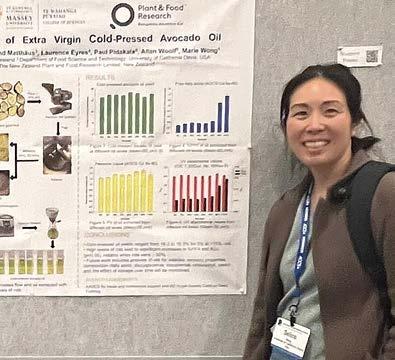
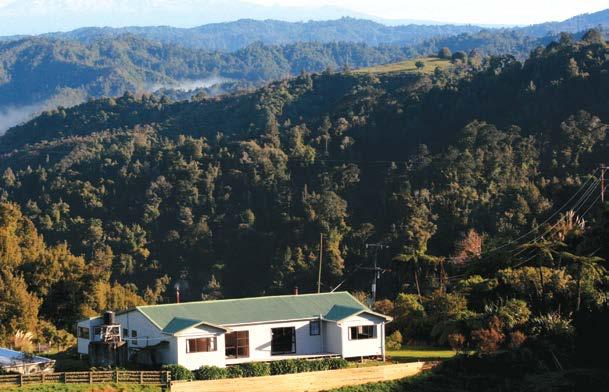


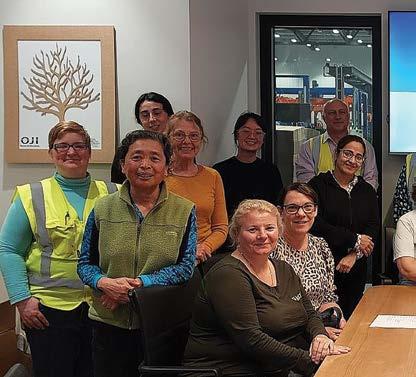
Executive Manager, Wendy Bayliss
PO Box 44322
Pt Chevalier
Auckland 1022
New Zealand
Networking – connecting with your peers
Regular information about your industry
Recognition through awards, scholarships, travel grants www.nzifst.org.nz/join/



Best Practice Guide to Managing Cronobacter: symbolising the best in human nature
Anuga FoodTec 2024
Nerida Kelton FAIP, Vice President Sustainability & Save Food, WPO Executive Director, AIP
“A Future for New Zealand Food” the 2019 Earle Lecture
We are all part of networks, some broader than others. Through our networks we connect for work, business and pleasure.
Phone: 022 549 8483, Email: wendy@nzifst.org.nz Website: www.nzifst.org.nz Next editorial and advertising deadline: July 20th, 2024 Features for August/September 2024

NZIFST Conference Review: Awards, events, J C Andrews Award address
Ultra-processing – an ill-considered term that is gaining increasing traction
A number of senior, highly qualified and experienced members of our Institute are increasingly concerned by the proliferation of the term ultra-processed to mean, puzzlingly, for food technologists, unhealthy foods. This situation reminds us that, apart from those of us who understand food processing from the inside, so to speak, there are many who operate in the food space who have never drilled down into the original paper that coined that term. Nor do they understand the myriad disciplines, not to mention unit operations, that are applied to prepare foods for market. Foods that are safe, palatable and, in most cases, wholesome. This classification does not accurately categorise food products by the level of the processing. It appears to consider only the number of different ingredients contained in the food. Therefore, the NOVA classification, which has coined the term ultra-processed", can lead to a negative perception by many consumers, because it neglects well-established science concepts from the food science domain.

Nutritionists have latched onto the term as a catch-all that they can use to criticise the food industry, adding further to the misinformation about foods that creates anxiety and, in some cases, severely unhealthy diets, as consumers try to follow all the recommendations they regularly see in mainstream media. This is a serious concern, primarily because of the wholesale use of an ill-defined term that adds to confusion for consumers.
In the April/May 2024 issue of Food New Zealand, Allan Main FNZIFST, wrote an in-depth article on this issue. References below are to the original papers by Monteiro C. A, from the University of Sao Paulo, Brazil, and a later paper from the same university’s Food Technology department pointing out the errors in the original NOVA Classification. The food industry is frequently criticised for producing unhealthy foods and causing (HAH!) obesity, heart disease, diabetes, you name it. As trained food scientists and food technologists I suggest it is up to us to fully inform ourselves of the original thinking that generated this term and be ready to debate it, any and every time we see or hear it being used. You can access Allan’s article HERE on ISSUU in that edition.
References:
1. Monteiro, C. A. (2009). Nutrition and health. The issue is not food, nor nutrients, so much as processing. Public Health Nutrition, 12(5), 729–731. https://doi.org/10.1017/S1368980009005291
2.Monteiro, C. A., Cannon, G., Levy, R. B., Moubarac, J.-C., Louzada, M. L. C., Rauber, F., et al. (2019). Ultra-processed foods: What they are and how to identify them. Public Health Nutrition, 22(5), 936–941. https://doi.org/10.1017/ S1368980018003762
3. Petus, R.R., do Amaral-Sobral, P.J. et al (2021):”The NOVA classification system: A critical perspective in food science”. Trends in Food Sci & Technol 116 (Oct 2021) p603-608
Newsbites is Food New Zealand's round-up of news about NZIFST members, associated companies and items that catch our interest.
NZ Excellence recognised at international awards
The Pure Food Co takes out international food innovation award
The Pure Food Co has won the Innovation of the Year category at the Asia Pacific Eldercare Innovation Awards in Singapore, recognising the best food and nutrition system on the market developed to improve the health of older people.
The Pure Food Co, which was founded in 2013 to nourish the world’s seniors, was recognised for the development of a nutritional system to improve the health of aged care residents and hospital patients in Australia, New Zealand and now France.
Delivering clinically-proven outcomes and backed by research, the Pure Food Co system can create efficiencies for aged care and health service providers, reduce food wastage and improve residents’ health and satisfaction. It also removes the costs, processes and risks associated with producing texture modified foods in-house.
Co-Founder and Co-Director Sam Bridgewater, who started the company after his step-father became ill and couldn’t find meals he wanted to eat, said the award recognised the years spent developing simple food programmes which people could enjoy while also improving their health.
“Older people need as much protein as elite athletes. However, most are getting 60% less than they need, resulting in lower muscle mass, more falls, hospitalisations and ill health. If we can turn that around, we can improve our quality of life as we age,” Mr Bridgewater said.
“Our texture modified foods include 41% more protein than comparable meals and 60% more energy.
The Pure Food Co’s Australian Director, Chris Deed, said food standards were closely monitored in aged care, as it was essential that residents were provided with the most nutritional food available to enable them to have a higher quality of life.
“We know that many aged care providers prepare their own modifiedtexture foods, but we think it’s important to ensure they’re fortified with protein and plant-based nutrients, and safe for residents that require a texture modified diet,” Mr Deed said.
Mr Bridgewater said The Pure Food Co had been working closely with chefs to develop 4,500 meal options, and the company works to continuously improve its offerings.
The 12th Asia Pacific Eldercare Awards, presented at the Ageing Asia 2024 World Ageing Festival from May 6-10, highlights organisations that redefine the ageing experience through innovative business practices, operational strategies, and service models.


Just in case you missed it
The Kiwi cheese industry’s night of nights, the NZ Champions of Cheese Awards Gala Dinner in Hamilton on Thursday 2 May 2024 was a celebration of excellence in New Zealand cheese craftsmanship.
Twenty-six trophy winners were announced following an extensive evaluation in early March assessing more than 250 locally produced cheeses, with the finest 187 already honoured with gold, silver and bronze medals.
A pdf listing all award winners in 2024 is HERE
Chief Judge, Jason Tarrant (right) at the Awards Judging in March
Andy Williams reports that New Zealand will host the International Dairy Federation Convention in 2026 at the New Zealand International Convention Centre. A programme template is being prepared and the search for sponsors and partners is underway. The website www. idfwds2026.com has been registered and information will be loaded early June.
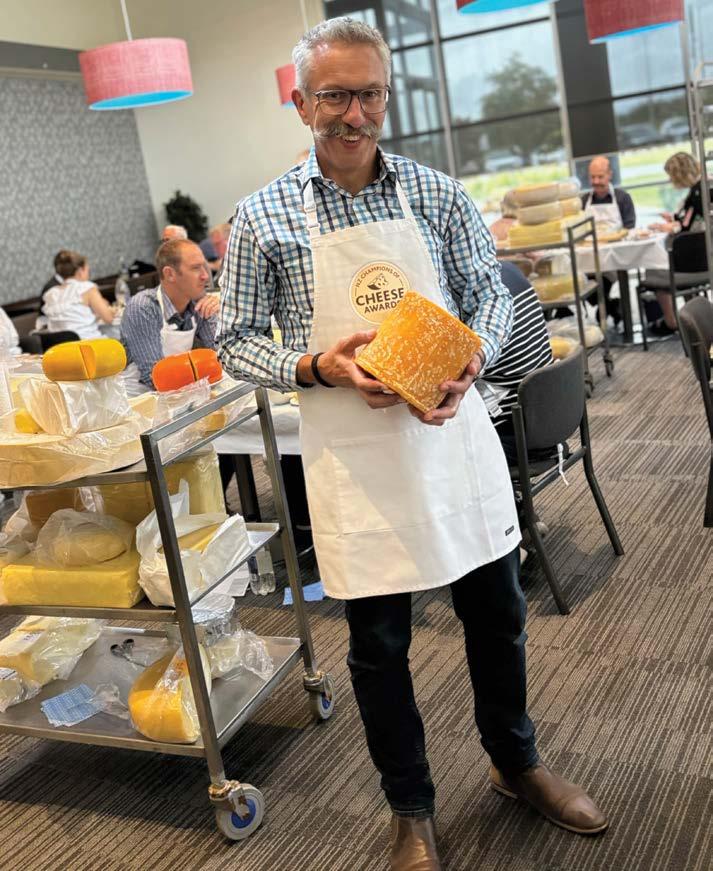
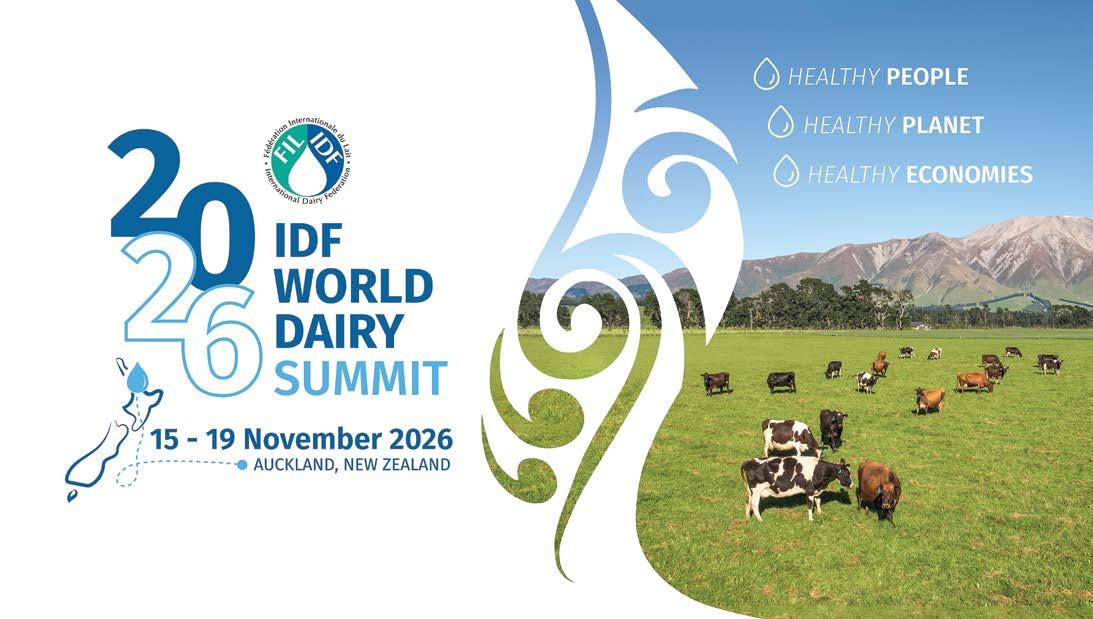
Hill Labs is marking its 40th anniversary, a milestone that underscores the enduring influence of its founders, Dr. Roger and Anne Hill. As New Zealand's largest privately owned analytical laboratory, Hill Labs provides state-of-the-art services across the agricultural, environmental, and food sectors. Dr. Jonno Hill, the current Managing Director, who joined the family business after completing his PhD, credits the company's success to the foundational values and culture established by his parents. Since taking over the reins in 2018, he has focused on maintaining these family values, which he believes are integral to the company's strategic focus and competitive edge. The company prides itself on a steadfast commitment to enhancing customer value and continuous self-improvement. This commitment is evident in its dedication to innovation, as in its microbiology and molecular biology sectors, where a customer-centric approach and technical excellence has forged trusted partnerships with multiple, long-standing food industry customers. Hill Labs has been at the forefront of developing rapid PCR testing services since 2014, providing next-day results that support swift and effective responses to pathogen outbreaks in the food industry.
Significant achievements include the development of a Listeria PCR test that identified previously unrecognised species in New Zealand, and its response during the Covid-19 pandemic, where it was among the few commercial laboratories offering PCR testing for SARSCOV-2.

Continuing its innovation trajectory, Hill Labs recently introduced a 3-in-1 swab testing service that enhances environmental monitoring by detecting multiple pathogens with a single swab, thereby reducing time, effort, and environmental impact. This new service promises significant benefits, especially for the dairy industry, with more advancements anticipated in the future.


Celebrating 30 years in New Zealand this year, Langdon has over 170 years' experience sourcing the finest ingredients from across the world. Established in 1852 by Henry Joseph Langdon, a young merchant from London, Langdon sold everything from alcohol, books, buttons, and pants. Over time, Langdon shifted focus to trading in ingredients, from dehydrated vegetables, herbs, spices and botanicals, cementing its expertise in food and health ingredients. Today the fifth-generation family-owned business is run by CEO Chris Langdon, with offices across New Zealand, Australia, the United Kingdom, Singapore, and Thailand.
The local team based in Auckland represent the family values of Langdon’s rich 172-year heritage. Knowledgeable and nimble, the team are responsive and personable with a focus on creating partnerships with customers. With their headquarters in Auckland, Langdon service New Zealand with a hands-on approach, with the team on the ground valuing face-to-face opportunities with customers across the nation.
Supplying to major food and beverage manufacturers across the world, including food service and wholesale customers in New Zealand, Langdon is recognised for their strong portfolio of ingredients. Their pantry extends across many categories including herbs, spices, dehydrated vegetables, botanicals, functional ingredients, IQF, flavours exclusively from The Product Makers, and much more. Their experienced global sourcing teams have established a strong supplier network, with many partnerships lasting decades. This allows Langdon to stock a wide range of ingredients, and if they don’t currently stock a product, they can source it. As the exclusive distributor for several leading brands and ingredients across the world, Langdon has access to a unique pantry that allows them to be a one stop shop.
Langdon know the level of quality and service that customers need to create consistently great products. Traceability and sustainability have never been more important than they are today, and Langdon’s long standing supplier relationships enable transparent supply chains
competencies.
Solutions focussed, Langdon's skilled team of Product Development Technologists can assist with product innovation and reformulations as well as application assistance. With years of technical expertise and a genuine passion for food, the team knows how to use their pantry of ingredients as building blocks to flavour, and in synergy, to help elevate customers’ products or to create the next innovation.
At the forefront of what’s happening around the globe, Langdon’s procurement, marketing, product development and sales teams work collaboratively to deliver the latest trends and ingredients to customers with a proactive approach. With global insights, they’re able to help brands innovate and keep on top of what’s happening in the market.
This month the team are excited to welcome Senior Innovation Manager, Leslie Lim, who will be visiting a range of customers showcasing the exclusive flavour offering through The Product Makers. A unique tasting experience, these product development presentations not only deliver on flavour but provide insights into global trends and application assistance.
Trusted for over 170 years in Australia and celebrating 30 years in New Zealand this year, Langdon has a legacy within the food and beverage industry. The team are excited to mark the 30th milestone with a roadshow event being held later in the year, to celebrate the partnerships and successes that have been forged with their customers over this time, and welcoming new customers to explore a world of taste with Langdon.
The team are also excited to relocate to a new central business-park, based minutes from Auckland’s CBD, with a dedicated product development kitchen and resource, collaborating with the Langdon team has never been easier.
To find out more about Langdon, please reach out to their friendly team at infonz@hjlangdon.com or call +64 9 270 2040.

Professor Siew Young Quek FNZIFST
A time-honoured tradition is the inaugural lecture where a new Professor can profess anything they wish.
Dr Siew Young Quek was appointed Professor of Food Science at the University of Auckland’s Faculty of Science in 2020, but COVID-19 caused a four-year delay in her inaugural lecture. She finally gave her lecture on 14 March 2024, and to a full lecture theatre.
Siew chose to time-travel, starting with her childhood in Kedah, Malaysia. She opined that “perhaps freely playing in nature as a child helps to boost complex thinking later in life”. She passed her BSc (Hons) at the National University of Malaysia and PhD at the School of Chemical Engineering at the University of Birmingham in the UK. She lectured in the Department of Food Science at the Universti Putra Malaysia in 2000, then joined the University of Auckland as a Lecturer in Food Science in 2004. She was a member of the NZIFST Auckland branch Committee in 2006, is now an NZIFST Fellow and has contributed to the membership committee and the annual NZIFST conference in organising committee, oral presentations, and students’ posters.
Student numbers have grown since she came to Auckland in 2004. The student enrolments increased from 10 back then up to 47 in 2020 for Food Product Development and 66 for Sensory Science, the two courses she established after joining the University.
Becoming the Food Science Programme Director in October 2015, she has welcomed new staff members, including Drs Peter Swedlund, Kang Huang, Davide Mercadante and Danae Larsen. Her commitment to food science education and vision for establishing the programme as one of the leading forces in New Zealand and internationally have yielded significant outcomes. The programme has attracted students, particularly postgraduates from overseas. International sources have ranked it among the top in the food science and technology subject area in Australasia, including the Shanghai Ranking and US News & World Report Global Subject Rankings in the last few years.
Siew’s passion for food science education and research has evolved and strengthened over the years. Combining her knowledge and experience in biochemistry, engineering, and food science, she has cultivated a profound research interest in food properties, functionalities, their interplay with processing aspects, and the creation of food products for health benefits and consumer enjoyment. Her research contributions extend globally as reflected in her recognition as one of the top 2% researchers worldwide (according to the recent Stanford ranking) and have received more than 10,000 citations.
International links have been developed with the Yamaguchi University in Japan in her early career and, more recently, with the Selenium-area of ethnic minority Tujia & Miao autonomous prefecture of Enshi in China in Selenium-rich functional foods. She contributed to her research profession by serving as the Co-Editorin-Chief for Future Food, an international scientific journal dedicated to food sustainability launched by Elsevier, a reputed Scientific publisher, in May 2020. The journal achieved an excellent impact factor of 5.7 after three years.
Currently, Prof. Quek holds the position of Principal Investigator at

Professor Siew Young Quek pictured in her Professor's regalia
the Riddet CORE, the New Zealand Centre of Research Excellence in Food Research. She is also the founding director of the Future Food Research Centre at the Faculty of Science, University of Auckland.
Siew paid tribute to her many postgraduate research students (43 PhD and 169 sub-doctoral students) by showcasing some of their research work and acknowledging all who have supported her in her academic journey.
Her final words? “If you want to go fast, go alone. If you want to go far, go with a team”.
Dave Pooch FNZIFSTAre you a pessimist or an optimist?
In our last article we discussed the changes that are occurring in the New Zealand Food industry and what this could mean for our careers going forward.
We introduced the need to be proactive around developing our Career Capital, the Social, Human and Psychological components that will enable us to achieve and maintain a competitive edge in the workforce.
This month we were presented with the news that Fonterra is looking to sell its Brands business which was a shock to many, however seems logical in terms of Fonterra’s strategy.
Optimists would say, this is nothing new, the industry is always changing and there will be new opportunities that arise if the sale goes ahead. Pessimists might think differently, seeing another iconic New Zealand food business likely to be owned by an international company leading to possible rationalisation.
Regardless of which side you sit there is rapidly growing recognition that we are operating in more turbulent or dynamic times.
Sustaining your career in 2024 and beyond is not about complacency but about constantly nurturing your skills, connections and mindset. It’s about being ready for what happens next in the world of work.
Peter Drucker made an important statement a few years back.

At its core, Career Capital is the portfolio of resources professionals build over the course of their careers. This portfolio encompasses three primary components: Social, Human and Psychological. Human Capital is specifically the skills, knowledge, and expertise that increase your value in the job market. There are two strategies for building Human capital.
In the rapidly changing job market, continuous learning is not just beneficial; it's essential. We must remain adaptable, investing in both hard skills – technical abilities specific to our field – and soft skills such as communication, leadership, and problem-solving. This involves seeking out professional development opportunities, further education, and certifications relevant to your career aspirations.
Gaining diverse experiences
Varied experiences, including different roles, industries, and even cultures, enrich your professional toolkit. They not only broaden your skillset but also enhance your ability to think critically and adapt to new situations. Volunteering, internships, and project-based roles are excellent ways to gain diverse experiences.
In the turbulent or dynamic food industry the important concept of being proactive in the development of your Career Capital is that it covers 3 distinct areas of development. The Social (covered in article 1) and psychological aspects (to be covered in article 3) have risen in importance alongside the Human Capital aspect that we are more familiar with.
None should be ignored. By focusing on building Human, Social, and Psychological Capital, you will better navigate the complexities of the job market with confidence and agility, ensuring greater long-term success and fulfilment.
John Lawson is founder of Lawson Williams Consulting Group. He initially studied Biotechnology at Massey and is a professional member of NZIFST. He now enjoys leading a team of recruitment consultants, helping people like you develop satisfying careers.


You’re not the boss of me

John Brooks' view of the food world through the lens of a microbiologist.
Leaving aside the execrable corruption of English syntax by an American TV series, the title might be appropriate for this edition of Sliding On.
There is currently a minor stand-off between the Ministry of Primary Industries and a company selling unpasteurised fruit juice. It’s a little difficult to find the processor and the products they sell, but they appear to be located in a food market in Wanaka. Their website says that they have juice stocks in both the North and South Islands and offer juicing services to private and commercial growers. They process rejected fruit from growers.
The company website includes a video of the juicing machine being operated outdoors. The operator is wearing neither protective clothing nor gloves. The fruit is manually loaded from bins into a hopper and the machine cuts the fruit into two and squeezes the juice out. Obviously, the juice will contact the outside of the skin during pressing. The juice runs into a screen and then into a 20L plastic collecting drum.
The juice is not pasteurised and is sold door-to-door, at markets and online, frozen, defrosted or partially frozen. The business owner claimed that the juice is frozen “to freeze out the bad bacteria” while pasteurising the juice would wipe out “the good bacteria”. Photographs on the company website show what appear to be glass bottles with flip-off stoppers containing various juices, but there are no labels on the bottles. The company website claims “We only use Spray-free/Organic fruit”. However, comments from members of the public in various newspaper articles suggest that at least some of the fruit is picked up from private residences where fruit is offered free to the locals. There is thus no guarantee that sprays have not been used or that the fruit is in good condition and doesn’t suffer from damage, mould or faecal contamination by birds.
Failing to register
New Zealand Food Safety (MPI) issued a Chief Executive Privileged Statement under Section 289 of the Food Act 2014, warning consumers about Our Fruit Box raw fruit juices. On the face of it, it appears the issue is that the processor refuses to register under the Food Act 2014. Using the NZ Food Safety tool and entering the available information for this processor, It appears that the company needs to register a National Programme 3 under the Food Act 2014. However, this is not just about not paying a registration fee. The registration process requires that the processor have an appropriate food safety programme.
According to an article by Caroline Williams published by Stuff on
16th April 2024, the business owner claims that she does not have to register her business, as “God is her boss, not MPI” and that she will continue to sell the juice unless someone is made ill by it and can prove it. Whether you accept this kind of argument or not, there are real concerns about this behaviour.
The risks
New Zealand Food Safety Technical Paper No: 2023/14 describes a scientific research project undertaken to provide data needed to assess microbiological risks associated with frozen produce used uncooked in blended food preparations.
Many pathogens can contaminate fruits via soil, faeces and water, but some may also be transferred by handlers at all stages of growing, harvest and processing. The pathogens include Salmonella, Shiga toxin-producing Escherichia coli, various species of Listeria and Yersinia, viruses, such as norovirus, hepatitis A and parasites including Cryptosporidium and Toxoplasma gondii. Unpasteurised fruit juices are frequently associated with foodborne outbreaks of food poisoning and have been reported world-wide. Freezing is known to decrease the numbers of bacteria by only about 2 log cycles and thus is not an effective means of pathogen elimination. Perhaps the pathogens of most concern are Salmonella and Escherichia coli O157:H7 which may cause haemolytic uraemic syndrome. Dewanti-Hariyadi (2014) has published an extensive table of Foodborne outbreaks due to juices (1).
According to the NZFS Technical Paper, “There were three New Zealand outbreaks reported from 2008 to 2015 where fresh produce was the most likely vehicle for infection based on epidemiological information. These were outbreaks of salmonellosis linked to watermelon, norovirus infection linked to fresh fruit salad, and yersiniosis, of which the geographic distribution of cases suggested a nationally distributed product such as carrots and/or lettuces”. It is possible to produce safe fruit juices, but control must be placed all along the production line – processing only mature and sound fruit produced with good agricultural practices, and proper hygiene of the juicing equipment. Properly pasteurised juices are regarded as safe. Pasteurisation may be achieved by heating or high-pressure processing.
Interestingly, I raised this issue with a group of friends. They said they would drink the juice, even though the processor didn’t have a food safety plan, as they thought the risk was minimal! (1). Dewanti-Hariyadi, R. Foodreview International 2014 VOL. I/ NO. 1

World Food Safety Day is on 7 June 2024. The World Health Organization continues its efforts to mainstream food safety in the public agenda and reduce the burden of foodborne diseases globally.
This year’s theme is “Food Safety: be prepared for the unexpected”.
The theme highlights that food safety is a collective responsibility, however even when everyone is producing and using food suitably, events or unexpected situations can compromise food safety. Preparing for the unexpected underlines the importance of being ready to respond to food safety incidents and other types of emergencies, no matter how mild or severe the event.
In New Zealand, food safety incidents are situations that require us all to respond to manage the impact of a potential, perceived, confirmed health or economic risk associated with the consumption of food here, or in an export market.
Food safety incidents can occur in isolation such as during a foodborne illness outbreak, a recall, or issues with imported products. Incidents can also be caused or exacerbated by other issues including power outages or natural hazards.
To manage risks, businesses can take steps to prevent, detect, respond to, and recover from food safety incidents. A proactive approach to food safety incident preparedness will help businesses act quickly when issues arise and protect consumers.
Plan, Prepare, Act
When the unexpected happens, preparedness is key. Having a plan for when an incident occurs and practicing it ahead of time will support a successful outcome. If a good plan is up to date, well-practiced and communicated, it will support you to take immediate action when issues arise.
Sharing of information saves lives
Understand who you might need to collaborate with before an issue arises, so you can get the support you need in a response. Consider mapping out key stakeholders and making sure their contact details are up to date. Fast and accurate information sharing among all relevant stakeholders helps identify the nature and origin of food safety incidents. Open channels of information can support the swift implementation of management or mitigation measures (e.g., a recall or safety messaging).
Maintaining confidence in the food supply
Providing accurate, open, and timely information to your stakeholders, including agencies such as NZFS, the media and the
public, helps prevents further illness and maintains trust in products and the food safety system.
Act decisively
Be ready to implement your response plans, including procedures for a product recall. Traceability systems are an effective tool to track food through the food chain, so it’s easier to identify products for recall.
Everyone is a risk manager
Empower staff to act if they spot an issue and communicate plans with them to ensure everybody knows their role when issues occur.
Expect the unexpected
As yourself:
• Is your business ready for when incidents occur?
• Do you know what you would do if there was a severe weather event or an earthquake?
• How might an incident or severe event impact your operations? There are actions you can take to make sure your business is ready and prepared for incidents and emergencies. Tools and resources are available on the MPI website to assist you with preparing for a food safety incident or emergency response.
The importance of preparing for food safety incidents cannot be overstated. I know how committed businesses across New Zealand are to providing safe and suitable food. As we approach World Food Safety Day, let us use this occasion to ensure measures are in place to safeguard public health, here and abroad. Get creative and take the opportunity to update and practice plans, involve all areas of your business, and celebrate the good work that happens across the food sector to prepare for incidents and emergencies. Food safety is everyone's business.
Contact NZFS in an incident on 0800 00 83 33 or Food.Compliance@ mpi.govt.nz
How to conduct a simulated recall link
Sign up for food recall alert emails here
Familiarise yourself with our emergency information for food businesses here
National Emergency Management Agencies' Get Your Work Ready page link

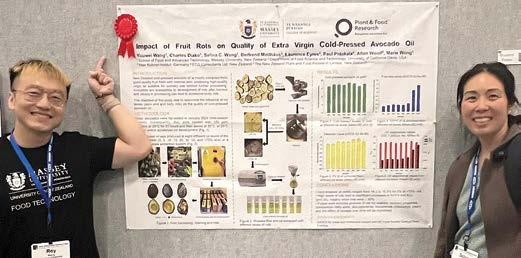
A Massey student just won an award for in the poster competition at AOCS in Montreal. Matt Miller and his AAAOCS colleagues facilitated the travel and registration for Youwei (Roy) Wang to attend this annual event, this year held in Canada. The photo shows him exhibiting the winning poster with his US supervisor for his research grant, Professor Selina Wang. The other two supervisors on the avocado project are Professor Marie Wong (Massey) his PhD supervisor and Dr. Allan Wolff (Plant & Food Research). Selina and UC Davis are offering the online course on avocados from growing to RBD oil production.
USP has submitted a standard for RBD avocado oil and it was published by the FCC and was effective on June 1, 2022. The current published Monograph is for refined avocado oil. Monographs are updated in June and December each year.
Highlights of the Montreal event were:
• Two short courses brought together a global audience to discuss lipid oxidation in foods and edible oil refining.
• Ninety industry partners filled the Expo Hall to share their products and latest innovations.
• AOCS recognized 40+ award winners for their dedication and accomplishments. Congratulations to everyone.
Researchers have developed a high-oleic acid microalgae strain suitable for nutrition, culinary, and personal care applications. They also engineered a strain capable of producing OPO (1,3-dioleoyl-2-

palmitoyl-glycerol), a structured triacylglycerol present in human milk, which can be incorporated into nutrition products for infants and toddlers.
• Microalgae converts simple sugars into lipids on an industrial scale quickly and efficiently using fermentation.
• By understanding the biology of microalgae, we can design the oil and how it is produced using classical strain improvements, genetic engineering, or a combination.
Note that Dr Julian Davies of DSIR pioneered this work 30 years ago and Colin Ratledge of the UK has maintained his groundbreaking work on microbial oil.
Developing lipids in oleaginous microorganisms has benefits beyond environmental sustainability. Researchers can alter the lipid composition of an oil on a much faster timescale than when it is agriculturally produced. Fatty acids can be fine-tuned on a glycerol backbone to produce the exact triacylglycerol composition for a specified application at industrial scale. The progress of biotechnology over the past decade has now made its way into the marketplace, resulting in consumer awareness of the advantage of microbial oils.
Reference: Microbial production of omega-3 fatty acids: an overview N Kannan, AS Rao, A Nair - Journal of Applied Microbiology, 2021 - academic.oup.com
Omega-5 also known as punicic acid, is a long chain polyunsaturated fatty acid found in certain seed oils like pomegranates. It is also recognized as “Trichosanic acid” with molecular formula C18H30O2, with molar mass 278.43 g/mol with melting point of 4445ºC. Punicic acid is an isomer of conjugated α-linolenic acid and a ω-5 polyunsaturated fatty acid which have structural resemblance with conjugated α-linolenic and linoleic acid, for instance the number of double bonds and atomic arrangement. Due to health benefits associated with these fatty acids, scientists are showing great interest in exploring functional and nutraceutical properties of punicic acid against various metabolic ailments. Omega-5 fatty acids are less well known than their Omega-3 cousins and may have similar health benefits, but are far less thoroughly researched, and even the safety of Omega-5 supplements has not been well investigated. The only foods that contain the long chain polyunsaturated fatty acid known as punicic acid are salmon, coconut oil and pomegranates, and pomegranate oil is the basis of most supplements.
The International Union of Pure and Applied Chemistry (IUPAC) designated its name as 9Z, 11E, 13Z-octadeca-9, 11, 13-trienoic acid.
As we enter an age of personalised nutrition, consumers will have access to more resources that help them identify which products work and which products do not. For those that make the effort to see a healthcare practitioner on a regular basis, cardiovascular health is consistently examined, and when medication is necessary, blood tests and other tools verify whether the medication is having an effect. At home tests, such as the Omega-3 Index Test from Omega Quant, may offer similar verification. The Omega-3 Index is the measure of Omega-3 EPA and DHA levels in red blood cells, and its inventors have published ample research demonstrating how one’s Omega-3 Index may influence the trajectory of one’s long-term health. More than that, it provides a tool for consumers to measure and track the progress of an intervention, specifically Omega-3 supplementation, and determine whether the amount of Omega-3 fatty acids in their system in increasing.
The optimal range of the Omega-3 Index is between 8 and 12%, so the test also allows consumers to set goals and measure progress. This could help improve compliance. “Seeing improvements in their numbers is what motivates [consumers].”
Unfortunately, official guidance on how much omega-3 EPA and DHA to consume does not really exist. ALA is the only essential fatty acid that has a set “adequate intake level” while no levels are set for EPA and DHA
That is not to say that everyone needs over 800 mg of EPA and DHA. The range of doses on the market does not necessarily have to be a negative. If a person consistently eats seafood or other sources of Omega-3s for example, they may not need such high doses. Offering a range of doses may help retain customers if they start low and decide to increase their intake or vice versa.
Other Bioactives to take along with omega-3 include: Phospholipids (lecithin), lutein, vitamin E, astaxanthin and Coenzyme Q10.
References
1. Bernhard, B.; Heydari, B.; Adbullah, S.; Francis, S.A.; Lumish, H.; Wang, W.; Jerosch-Herold, M.; Harris, W.S.; Kwong, R.Y. Effect of six month’s treatment with omega-3 acid ethyl esters on longterm outcomes after acute myocardial infarction: The OMEGAREMODEL randomized clinical trial. International Journal of Cardiology. 2024, 399. DOI: 10.1016/j.ijcard.2023.131698
2. Omega-3 Fatty Acids. National Institutes of Health Office of Dietary Supplements. February 15, 2023. https://ods.od.nih.gov/ factsheets/Omega3FattyAcids-HealthProfessional/ (accessed 202403-22).
3. Harris, B. Omega-3 Cochrane meta-analysis is highly flawed, researcher writes. Nutritional Outlook. August 30, 2018. https:// www.nutritionaloutlook.com/view/omega-3-cochrane-metaanalysis-highly-flawed-researcher-writes (accessed 2024-03-22).
The link between the human microbiome and disease is a rapidly growing field of research. There is increasing evidence for interaction between the gastrointestinal tract (GI) and the central nervous system (CNS). The gut-brain axis can thus be defined as a two-way communication system that functions through pathways such as neural pathways (enteric and sympathetic nervous systems, etc.) and humoral (including cytokine signalling and microbial signalling). The
gut microbiome is a richly diverse community of bacteria that initially colonise the gut following birth and maintain a stable composition throughout life.
The term Hybrid Wiped-Film Distillation refers to a combination of the low thermal stress processing of Wiped-Film Distillation with the separation capabilities of a Packed Fractionating Column.
The Wiped-Film acts as a once-through, low thermal stress, low hold-up, partial reboiler for the distillation. The appropriate size and surface area of the Wiped Film Evaporator is determined by scale-up calculations based on distillation Pilot Plant trials.
• Constant, controlled feed rate
• Steady vacuum level
• Steady evaporator temperature
The bottom of the Packed Fractionating Column is connected to the vapour arm of the Wiped-Film Evaporator, and is filled with column packing of a variety of commercially available distillation column packing types.
The diameter of the column is chosen based on the feed rate to the system, and the height of the packed column is chosen according to the number of theoretical plates needed for the desired separation. The diameter and column height are critical design parameters. Sufficient theoretical plates, as determined by the depth of the packing in the column, must be used for a successful separation, but a large excess of column height will cause too much pressure drop, thereby raising the pressure in the reboiler, and thus require a higher reboiler temperature for the desired boil-up for the column. The higher required temperature can cause thermal degradation of the material being processed. A professionally designed column balances the number of theoretical plates needed for the separation against the resulting pressure drop to enable the desired separation.
The column diameter needs to be appropriately designed to manage the desired boil-up. A column that is too small in diameter will flood at the desired distillation rate. A column that is too large in diameter will not allow sufficient contact between the vapor and liquid in the column and will give a very inefficient separation.
The condensed liquid from the overhead condenser is split into two streams by a three-way valve, using a timer to control the ratio of distillate take-off vs. reflux returned to the column. The proper reflux rate must be determined to allow the required energy exchange between vapor and liquid and cause the enrichment of the light key component(s) at the top of the column.
A few examples of applications successfully developed on a Hybrid Wiped-Film Distillation System are:
• Omega-3 concentration and separation
• Edible Oils
• Flavour component purification
• Fragrance component purification
• Nutritional Supplement purification
• Fatty Acid fractionating
• Fatty Acid Ester fractionating
• Terpenoid separation from natural oils
• Many other temperature sensitive separations.

Food Techies are an active lot and many of us have interests and enterprises on the side that will fascinate the rest of us. Often skills and attitudes acquired in Food Technology get applied to a hobby – often the hobby builds new skills. This column records the odd interests, quirks and side hustles of Food Techies when we are not watching. We pull back the curtain and take a peek….
carbon farmers
In 2011, Richard and Deb Archer plus Dennis and Irene Thomas plus long-term friends, Paul and Diane Stephenson went farming. We bought a 104 Ha sheep and beef farm about 22 km inland of Waverley in South Taranaki. Its four-bedroom house gets views of both Taranaki maunga and the Tasman sea – plus a wee breeze. We sit on a watershed at the headwaters of the Kohi stream, a tributary of the Whenuakura. This is tiger country and DOC is our biggest neighbour.
Our plan was to make Manuka honey to give us early revenue and grow timber for revenue for the next generation. At the same time we planned to sequester our lifetimes’ carbon emissions. So we planted about 50,000 manuka seedlings and about 45,000 exotic trees – with the help of an Afforestation Grant Scheme grant for the exotics and a Regional Council grant to retire an erosion-prone paddock into bush. The grant money helped with fencing and planting.
While we are not rich yet, the honey money and Grant income has paid for much of the forest development. We used professionals for all the planting (84 Ha), all the pine pruning (22 Ha) and for pruning around 1000 selected Cupressus lusitanica trees. Meanwhile Paul prunes the other 1500 cypresses and the 2500 Eucalyptus fastigata and Richard prunes the 4500 redwoods. And not one of us pays any gym fees. Dennis does all the house and structure maintenance and the accounts. Paul looks after forestry planning and ETS carbon
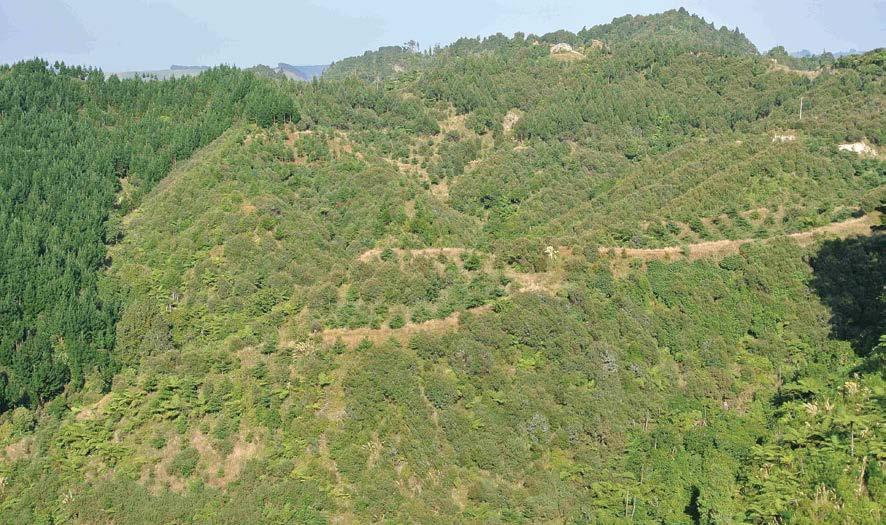
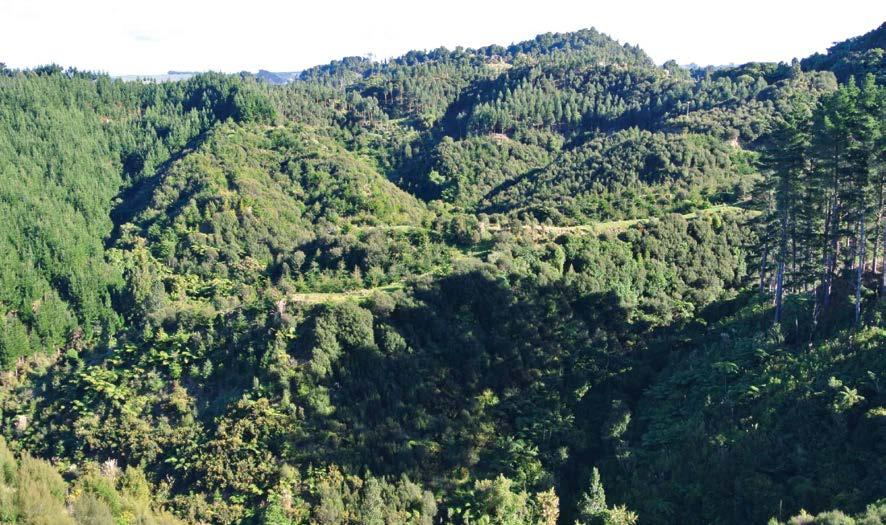
credits. And Richard does pest control (goats, deer, possums, rats, stoats, pigs, hedgehogs, rabbits and feral cats) with guns and traps plus controlling gorse with scrub bar and spray. Farming, we learnt, is all about killing stuff.
We also help look after kiwi living next door on the DOC block – we are part of a group of neighbouring landowners running trap lines organised by the Mt Hiwi Kiwi Trust. We have heard Kiwi and seen footprints in mud but not yet seen any ourselves – maybe because they only wander after wine time.
Twelve years in, our plantings are maturing. All the pines silviculture is finished. The rest of the exotics are pruned to around 5 m of the planned 6.5m. The manuka is in full production (2 to 3 tonnes of honey annually) most around UMF15. We have recovered from a tornado, two cyclones and about 50 slips (totalling ~15,000 m³ of rock and soil). We’ve also planted a thousand larger natives, mostly
How the view changes as the trees take hold and thrive
podocarps within 250 m of the house, and graze about 2 Ha of grass round the house. We know most of the land well but none of us has yet walked the southern boundary – as none of us can abseil!
Forestry typically incurs heavy costs for a decade then lower maintenance costs. That suits shareholders who can use annual losses on their personal books and the look-through company structure is designed for that purpose. We arranged our investment so that honey revenue covered most of the silviculture costs across those first ten years. Now that we are merely maintaining and make profits, we have restructured to a normal private company.
Our AGS grant meant we could not receive carbon credits off the relevant area for the first decade. The recent financial year is our first of picking up carbon credits in our own right and we are learning the art of selling in a fickle market while retaining sufficient credits to cover potential liabilities. We also face some deferred maintenance including a big bill to rebuild a road to one of the hive sites. Maintaining 3 or 4 km of track on a temperate rain-forest property can be expensive.


the odd possum…and then there are the
feral cats
Just when things were coming right we had a collective rush of blood: In June 2022 we bought another 80 Ha sheep and beef farm a bit North of Hunterville. Different district and region, similar contour, different soil, similarly poorly suited to grass and ruminants. This time we are in our 70’s and not 60’s. We picked a property with no house or woolshed to look after and only 7 km off SH1 and only one hour from Palmerston North. We don’t want more pruning – so no exotic forest.
Last winter we planted the Eastern half in manuka as before. This winter we are doing the Western half. We’ve built a small shed for tools and smoko. Again, we have some some Regional Council grant assistance toward planting costs. In total, we are planting nearly 90,000 manuka at 3m centres and interplanting perhaps 2,000 podocarps on a regular grid for timber next century. We will progressively put flaxes on track margins and gullies. This time we have invested in goat-proofing the boundary fence and using professional hunters to clean up before planting. We plan for the podocarps to seed the property in random fashion so our great, great



grandchildren have both a native forest plus native timber from the original grid of grandfather trees.
Carbon credits and honey and some wild meat should provide some modest payback in our lifetimes. We are hoping for a more favourable position under the emissions trading scheme for native forests at some point. And we are hoping for an easier and more robust system of permitting felling of native trees planted for timber a century earlier.
Why did we spend so much on some tired old land? We all fancied turning some country too soft for sheep and beef back to trees and birds. And we were interested in investment. Each of the six of us has a different balance of incentives. Some want work, some play, some adventure, some riches, some to build something great, some to dream something even greater. Dennis wanted a genuinely green retirement income; Paul wanted to nurture a forest, not just invest in pines and Richard wanted to drive diggers and shoot stuff. Our food tech, engineering and teaching backgrounds have made us pretty practical and pragmatic but with dreams intact. We can now see the capital asset building and can feel the profits starting to flow. We can now prune and fell trees, shoot and trap animals, count carbon credits and dollar notes, argue and agree. We can smell the fresh air, hear the birds and drink in the views.
If any other Food Techies fancy doing similar re-wilding things in their shadows drop us a line. We can tell you heaps about what not to do and even show you around. None of this is for the fainthearted. You won’t make fortunes. Guns, ladders and saws all have their dangers. Carbon accounting challenges even a fastidious food engineer. The weather is against you, and if the land is affordable then access is precarious. But you can spend your shadow time in paradise!
The Chinese government is encouraging its people to consume more cows’ milk. ‘A cup of milk a day makes Chinese people strong’, was the well-known slogan of a leading Chinese dairy company. Official dietary guidelines have raised the recommended intake of liquid milk equivalent per day from 300g to between 300g and 500g (roughly equivalent to half a litre).
The impressive increase in height of the Japanese population after they started consuming dairy milk has not gone unnoticed. The Japanese instituted a national school lunch programme, including milk, following WWII.
So ironically, while some western consumers are switching to alternative plant milks, the Chinese are going in the other direction. In fact, it was the Chinese who first developed plant-based milk 2000 years ago, from soya beans, the only plant to contain all the essential amino acids (protein constituents) the body cannot make for itself. However, soya beans lack other nutrients and growth factors in cows’ milk.
Although dairy milk consumption in China has risen dramatically from virtually zero at the end of WWII, their per capita consumption is only a third of the global average, and a tenth that of the world’s top milk consumer, Finland. Local dairy production has also vastly increased, from 1.2 million tonnes in 1980 to 42.0 million tonnes in 2023, but there is a shortfall of about 30% between what they produce and what they consume. China is still the largest importer of dairy products. An historical lack of cold chain distribution and home refrigeration facilities means that milk is mostly sold in shelf-stable formats, such as UHT milk, ambient yoghurt and milk powders. Uneven economic growth has resulted in uneven market expansion across different regions and hence milk consumption patterns vary across the country.
Given the government’s support for milk, an ageing population interested in maintaining bone and general health, coupled with the preference for imported milks (There is still a lack of trust in local product following the 2008 melamine scandal, when six infants died and thousands were hospitalised.) our government and dairy industry want to know much more about where, when, why and how milk is consumed, in the massive Chinese market. Homogenous it is not.
As part of a government-funded research programme, NZ Milks Mean More, Professor Joanne Hort (Fonterra-Riddet Chair of Consumer and Sensory Science at Massey University) designed

Dr Ao Chen, who joined the FEAST laboratory team in 2021 and assumed responsibility for the research project into Chinese Dairy milk consumption
and commissioned research into Chinese milk consumption habits. Joanne is an expert in testing how and why consumers respond to food and drink in different ways and how this affects purchasing decisions.
In 2017 Joanne imported her well-developed methodology from Nottingham, England, when she moved to New Zealand. Her fiveyear-old Food Experience and Sensory Testing (FEAST) laboratory at Massey University in Palmerston North contains an array of hightech equipment to discern the nuances of local consumer likes and dislikes – how taste is affected by smell, colour, texture, sound, salt and sugar content, acidity, packaging, product preconceptions, nutrition claims, attitudes to food provenance and sustainability, surroundings, social context, temperature, and affordability. Taste preferences are individual, but there are distinct cultural and genetic differences which can be generalised. These studies are not just interesting but are vital to the success of new product launches, especially in foreign markets, to enable them to compete in crowded retail settings.
Joanne’s 2022 survey of 1000 Chinese consumers who regularly consume milk, compared the consumption characteristics of adults aged between 45 and 75 in the mega-cities of Beijing, Shanghai, and Guangzhou, with two smaller provincial cities: Chengdu (southwest) and Shenyang (northeast). This choice of comparison proved important. The focus was on older adults, a fast- growing population in China. The idea of a product designed for consumption by older adults is a very well-developed concept in China. Foods designed for older adults in the Chinese market are now dominated by milks. Dr Ao Chen, who joined the FEAST laboratory team in 2021 and assumed responsibility for the research project, grew up in
Chengdu, and came to New Zealand in 2013 to study pastoral dairy farming systems. Ao was surprised at the differences between milk consumption habits in New Zealand and China. His knowledge of Chinese dietary customs and regional variations has been particularly useful in interpreting the results of the research qualitatively.
He reports the key research findings as follows. “Most dairy milk in China is consumed by city-dwellers. It requires a changed mindset, and new ideas and exotic foods and drinks tend to be adopted first in the big cities, where people are more open-minded and affluent. Nearly half of the consumers consume UHT milks because of its popularity in the market. UHT is distinctly preferred by consumers in Chengdu and Shenyang (73% and 78% respectively), whereas powdered milk is favoured in Guangzhou. Fresh pasteurised milk in China is not very common but in recent years, its popularity has been increasing, especially in Beijing and Shanghai."
“Seventy five percent of participants drink their milk straight, as part of breakfast, at home. In the big cities they often pair it with more exotic western style breads and cereals and sometimes make other beverages with the milk. In the smaller cities they tend to consume milk with more traditional breakfast foods such as steamed buns. In cold, northeast Shenyang, they often skip breakfast during the
short daylight hours of winter and drink their milk before bedtime or flexibly during the day. Except for preparing doughs, milk is seldom used as an ingredient in cooking.”
“Generally, butter and cheese consumption is negligible, though yoghurt is becoming popular. The Chinese are not yet addicted to lattes and flat whites and are not in the habit of adding milk to tea. However, milk is added to bubble tea which is increasingly popular with the younger generation. The Chinese don’t particularly relish the taste of milk on its own, so about one in ten will add sugar or honey. It is the nutrition and health benefits of milk driving consumption,” says Ao.
Ao is often asked why the Chinese are taking to cows’ milk with such enthusiasm when many are reputedly lactose intolerant (lacking the genetic mutation which enables digestion of lactose past infancy). He says that even though Asians generally suffer from lactose malabsorption, in fact most Chinese can drink milk without ill-effect, provided they don’t drink too much at once. The beneficial bacteria in their colon would process the by-products of lactose. Therefore, it is not regarded as any impediment to increased consumption.
Link to paper: https://www.journalofdairyscience.org/article/ S0022-0302(24)00045-6/fulltext

This article has been written exclusively for FoodNZ by the NZ Food Safety Science & Research Centre.

Philip Wescombe, Oceania’s R&D Manager, Chaired the Centre’s Industry Advisory Group during the term of the Cronobacter project

Associate Professor Simon Swift (University of Auckland) who was heavily involved in the informationgathering
The definitive guide to managing Cronobacter, just launched, may not make the best-seller list, but it represents the best in human nature and many years of New Zealand’s experience in producing safe, top quality infant formula. It has the potential to save lives that have only just begun.
Contributing New Zealand dairy companies suppressed any competitive angst to pool their knowledge about managing Cronobacter for the greater good. NZ Food Safety Science & Research Centre (Centre) Chief Scientist, Distinguished Professor Phil Bremer, believes it’s a world first. The guide will soon be available from the NZFSSRC website* for anyone to learn from, here or overseas.
The project was initiated and co-funded by a number of producers of infant formula/ingredients for infant formula, with strong support from Oceania Dairy limited, and the Universities of Otago and Auckland. Philip Wescombe, Oceania’s R&D Manager, was chair of the Centre’s Industry Advisory Group when the project was conceived
and stayed with the project to completion. Our forward-thinking participating companies opened the doors to Phil Bremer (University of Otago) and Associate Professor Simon Swift (University of Auckland), giving them the freedom to inspect facilities and observe their processing and testing regimes, interrogate their testing records, sit down with their people and understand exactly what they do, discover any tips and tricks they had to offer, and learn what the greatest challenges were and how they managed to resolve them.
One of the food safety managers involved explained that unforeseen breaches of their strict exclusion protocols could occur, such as a maintenance worker bringing in contaminated clothing or tools, undetected ruptures in air and water seals, and roof leaks. Regular sampling of the factory environment is designed to identify these events, followed by challenging forensic backtracking to locate the possible breach.
The researchers also met with regulatory authorities and, importantly, successive drafts of the guide have been extensively reviewed by industry members, regulators and other academics to produce the most up-to-date guide to best practice. Fonterra’s experts in this domain had an oversight advisory role and painstakingly reviewed the comprehensive guide. No stone was left unturned.
The exhaustive research was stop-start over a couple of years due to COVID-19 lockdowns delaying many in-person visits. But they persevered and everyone is proud of the result.
Cronobacter sakazakii is highly dangerous to babies under two months, who have undeveloped immune systems. It can cause sepsis and fatal meningitis. (The bacteria are named after Cronos, a Titan in Greek mythology who swallowed his infants when they were born, in fear of being replaced by them.) The bacteria can survive in dry environments like infant formula, and multiply in the comfortable temperature range of formula if it is not stored and consumed as recommended. It takes very low numbers of the bacteria to cause infection.
In the US, as recently as 2022, two of four babies who became very sick with Cronobacter sakazakii, died. This was a further spur to the project, though none was needed. In the US case, all the babies
had been fed formula from the same factory in Michigan, although reportedly no genetic link could be found between the samples from the facility and isolates from the powder and water used to feed the babies.
Phil says New Zealand regulatory authorities and dairy companies have strict controls to prevent contamination, robust sampling regimes to test for Cronobacter sakazakii, and clear guidelines on what to do if contamination is found. Industry knows only too well that if it is found in infant formula, it has the potential to cause enormous disruption – product recalls, factory closures and exclusion from international markets, which could extend beyond the facility concerned and cast a long shadow over the whole industry’s reputation. In the US case above, the recalls resulted in a critical nationwide shortage of infant formula for a time.
While we have robust testing strategies and great regulatory oversight,
Research and Development Manager, Yili Innovation Centre Oceania, Dr Philip Wescombe:
“Yili has developed dairy industry and research partnerships at its innovation centres around the world, including membership of the New Zealand Food Safety Science & Research Centre.
“We are particularly excited that Oceania Dairy Limited (a subsidiary of Yili) was an industry member involved in driving the development of best management practices for Cronobacter sakazakii for the benefit of the whole dairy industry.
“The seriousness of Cronobacter sakazakii detection and prevention cannot be understated. Even when Cronobacter sakazakii is identified and prevented from reaching consumers, the identification event can have serious and ongoing implications for supply chains, which we witnessed during a recent infant formula recall in the United States in 2022.
“Research suggests that shortages of baby formula nationally in the US resulting from the voluntary recall of products and the shutdown of the manufacturing facility, led to increases in the national out-of-stock rate of infant formula from 18% to 70% over the summer of 2022.
“The consequences of the contamination event were compounded
Phil says some companies have more experience than others in managing Cronobacter sakazakii. In order to bring all New Zealand infant formula producers up to the same high standard, industry leaders kindly agreed to share their expertise and knowledge. Nervousness about any suggestion that contamination of product with this pathogen is a possibility, is understandable. Markets are increasingly jittery and there is zero tolerance of Cronobacter in infant milk powder. New Zealand has an excellent record and will do everything in its power to keep it that way.
*The official title of the guide is The Management of Cronobacter in Powdered Infant Formula (PIF) Manufacturing and/or Dairy Processing Plants in New Zealand. It will be uploaded to www.nzfssrc.org.nz
by the fact that the manufacturer was the major supplier of infant formula for the US Government’s Special Supplemental Nutrition Program for families with low incomes and nutritionally vulnerable infants.
“We are therefore honoured to be part of the development of this code of practice and sincerely hope that industry partnerships such as those developed here in New Zealand with food safety researchers can also be developed around the world.’’
General Manager Quality and Compliance, Oceania Dairy Limited, Hila Mory, added
“When it comes to a bacterium like Cronobacter, it is not necessarily enough just to maintain high hygiene standards. We must continually improve on best practice by researching and sharing knowledge.
“As a bacterium, Cronobacter sakazakii can evolve and become tolerant of cleaning agents, which means we need to continually innovate to maintain our food safety practices to the highest possible standards. The code of practice draws upon a robust foundation of scientific inquiry, extensive research, and invaluable practical insights. Its primary aim is to support manufacturers to produce safe powdered infant formula.”

Aluminium free aseptic cartons, seaweed films, top wrap labelling and paper based trays lead the charge
Nerida
Joining 39,999 other people from 133 countries I recently ticked off my first participation at Anuga FoodTec which was held in Cologne, Germany.
As Anuga FoodTec is the leading international trade exhibition for the food and beverage industries, the World Packaging Organisation (WPO) decided to exhibit for the first time and also participate in three speaking sessions during the four-day show.
I had the opportunity to visit some of the exhibition stands, talk to a number of exhibitors and see what packaging is new, innovative and intuitive. I was particularly looking for packaging that is recycle ready, offers improvements to packaging to provide lower environmental impacts, new advancements in paperisation and renewable materials and what is happening in Save Food Packaging design.
Some of the packs that I wanted to share were the SIG Alu Free cartons, Sea6 Energy seaweed films, Micvac ready meal packs, Multivac Top Wrap and Top Close labelling and Paperboard and G. Mondini Slimfresh.
SIG Alu Free cartons are an aseptic carton with no aluminium layer. The carton is FSC certified paperboard, is fully recyclable and produced with 100% renewable energy. The SIG Alu free carton has a carbon footprint up to 27% lower than standard SIG packaging material, thanks to a unique composite with no aluminium layer. It is specifically designed for liquid dairy products such as plain white UHT milk, cream, and other oxygen-sensitive products. The carton is made from up to 82% renewable paperboard, with ultra-thin polymer layers to contain and protect products over long periods without the need for refrigeration.
SIG also recently added the option to link to 100% forest-based
renewable materials via a mass-balance system. The SIG Alu free carton is another step towards removing aluminium from aseptic cartons but still maintain shelf life and barrier for products.
www.sig.biz
Micvac is an innovative food processing and packaging solution company which has designed a unique in-pack cooking and pasteurisation method that provides healthy ready meals.
The original idea was borne out of trying to preserve one of the most delicate foods there is – mussels. The inventor (and founding father), Dr Joel Haamer, conducted extensive research into marine food cultivation and preservation throughout his career. He found that the best way to preserve mussels was to get rid of all the oxygen and use a fast thermal treatment. 23 years later Micvac is a thriving business.
Micvac vs food loss and waste
The team at Micvac understand the environmental impacts of food loss and waste and they wanted to ensure that the system not only extends the shelf life of ready meals but also improves production methods to minimise food loss.
The Micvac solution sees the food cooked and pasteurised in the packaging; portion by portion. The food is usually packed raw, with very few pre-cooking steps. This means that there is far less risk of excess food loss in the production process, as there is no need to prepare large batches.
Micvac multifunctional valve
The Micvac valve is at the core of the packaging design and is constructed in layers with a special adhesive in between. As the temperature rises, the air pressure opens the valve to release the
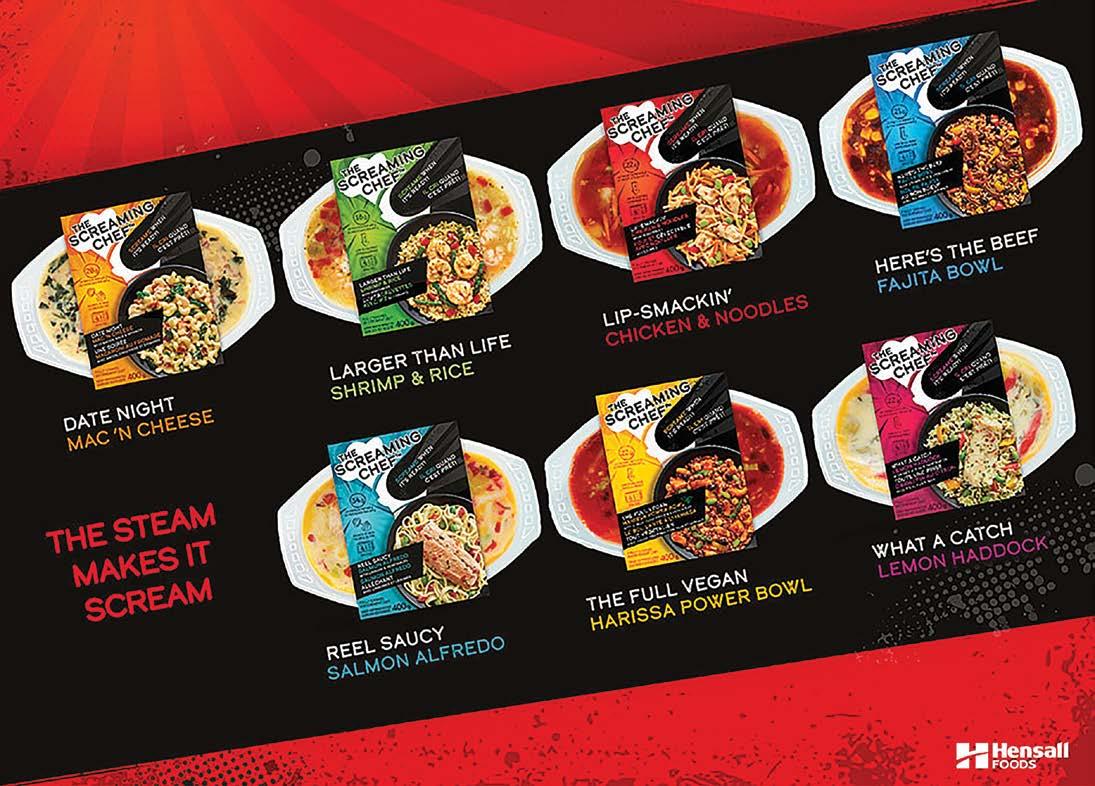
Canadian Company Henshall Foods has adopted the MicVac solution for limited shelf-life microwavable meal packs that incorporate a unique pressure valve system that screams when the food is adequately reheated
steam, and with it the air/oxygen molecules in the package. When cooling begins the valve closes and the package is airtight again. The remaining steam condenses, thereby creating a vacuum in the package.
This is a natural vacuum, allowing the meal a prolonged shelf life. The valve is able to repeat this over and over again. When the end consumer heats up the meal in the microwave oven at home, the valve once again does its duty and opens up to release steam – and with it a whistling signal.
Ready Meals made with the Micvac method have a shelf life of approximately 40-60 days which in turn ensures that stores can keep food waste to a minimum. The packs are designed with portion control, extension of shelf life and consumer convenience in mind. A Micvac-made portion, with its unique extension of shelf-life design features, lasts a considerable time in the fridge. A portion-cooked ready meal is less likely to be wasted through the Micvac solution.
Micvac and packaging
The package used at Micvac is in many ways superior to other meal
solutions. A Micvac portion has a minimum of plastic per kilogramme of food, thanks to the vacuum and cooking process. The Micvac tray is designed to use just the right amount of packaging for the contents, which means no unnecessary airspace is transported. Furthermore, the trays are recyclable, and the plastic gets used in the production of new products.
In light of Save Food Packaging design and technologies for minimising food loss and waste, Micvac really stood out to me as unique, and I look forward to seeing this business extend elsewhere in the world.
www.micvac.com
Visiting the Multivac stand at Anuga FoodTec actually took two trips as there was so much to discover in the way of advancements in sustainable packaging solutions, fibre-based trays and some very impressive top wrap and top close labelling.
If your fruit and vegetables don't have to be packed in a modified
Top Close labelling technology from Multivac seals trays from above and labels them in a single pass

atmosphere or a vacuum, then your trays can be sealed with labels and marked directly.
Top wrap labelling seals the trays with a label from above and over two sides so that the content of the tray is secure from falling out or being easily removed from the tray. The packs are automatically labelled on the line, providing tangible cost savings compared to time-consuming, manual packaging solutions.
There are a wide range of label materials available to match the recyclability regulations for each country and a combination of cardboard trays and paper labels optimise recyclability of the pack. The cut-outs are designed for air circulation.
In the case of Top Close labelling, a label adheres only to the edge of the tray. Top Close labelling seals trays from above and labels them in a single pass. The carrier material is retained in the centre of the label so that your product does not come into contact with the adhesive.
I saw paper-based meat trays across multiple stands and I was interested to see if there had been any advancements in functionality and sustainable packaging design features. The Multivac PaperBoard formable paper stood out to me for its thoughtful and intuitive design.
The PaperBoard series has been designed to eliminate single use plastics, reduce the use of plastics and improve recyclability of the packs.
PaperBoard material can be run on packaging systems in the form of rolls, pre-cuts, or trays. Paper fibre and cardboard composites with different grammages and functional layers are available. The use of functional layers makes it possible to produce paper-based packs that meet the barrier property requirements of the respective product. What I personally like about the PaperBoard series is that the design is a step ahead of many other available solutions in the market for separability of the components for recycling. So many consumers
get frustrated by some of the packs on the market as they can’t easily separate the film from the paper. This in turn means that the separable components end up in the wrong disposal bin and the pack that has been promoted as reducing single use plastic and being "more sustainable" is not actually meeting sustainable design standards.
The PaperBoard design however does separate easily as I tested multiple packs. The design features are intuitive and ensure that the paper and the film can, in fact, be easily and quickly separated by a consumer.
www.multivac.com
I was lucky enough to have shared a stage with Ludwig Schmidtchen from Sea6 Energy at a Science Slam presentation and I walked away thinking a lot more about seaweed and whether this is a viable alternate for some packaging films. It is certainly an area that we need to better understand.
Seaweeds, characterised by their efficient utilisation of solar energy and minimal resource requirements, offer a promising solution to address the pressing challenges of resource scarcity and environmental degradation.
The utilisation of seaweed biomass extends beyond traditional boundaries, encompassing the production of bio stimulants for agriculture and horticulture, food and feed ingredients, and the development of innovative biomaterials tailored for the packaging industry.
Headquartered in Bangalore, Sea6 Energy believes that there is a critical need to design innovation strategies to meet the escalating demand for raw materials, particularly within the packaging industry. Sea6 Energy is actively engaged in research and development efforts to formulate seaweed-derived biomaterials such as coatings and extrusion compounds for flexible films and rigids. These biomaterials offer several advantages, including biodegradability, renewability, and reduced environmental impact, positioning them as sustainable alternatives to traditional packaging materials.
Sea6 Energy have become a pioneer of innovative technologies for sustainable, large-scale and mechanised farming of sea-plants and the conversion of this sea-plant biomass to novel products for use in agriculture, aquaculture, food ingredients, renewable chemicals, bioplastics as well as Biofuel.
Sea6 Energy are developing seaweed-based, compostable films that can be used for packaging of FMCG goods and fast foods. These films, when discarded into the environment, will compost in a few months and are available in Food and Non-food grades. The commercialisation of first materials is targeted within the next 12 months.
I look forward to watching Sea6 Energy developments in the future. https://www.sea6energy.com/solutions/bio-plastics/
The last stand that I wanted to talk about was G.Mondini and the first thing that stopped me was the display of the SlimFresh for Salmon. The skin pack solution offering thinness of pack was the first thing that caught my eye. Compared to other solutions for Salmon packaging that I have seen recently, this one really stands out.
SlimFresh
SlimFresh is composed of a flat cardboard support as its base laminated with a thin layer of plastic film and sealed with a top skin web as a second invisible skin around the product. The resulting vacuum skin pack offers the possibility of extending food shelf-life, ensuring freshness and bringing logistic benefits.
Recycling and sustainability are the drivers of this new pack and removing the plastic film liner from the paper is simple, ensuring efficient recycling of the paper/fibre support.
The SlimFresh skin pack solution is made up of a cardboard base combined with vacuum skin packaging. The pack offers a uniquely

SlimFresh technology from G. Mondini is composed of a flat cardboard support as its base laminated with a thin layer of plastic film and sealed with a top skin web as a second invisible skin around the product
shaped window and the laser cutting of paper allows each brand to be able to create several window shapes depending on the product shape and size. It has the ability to pack irregular shapes for better merchandising and offers all the benefits of skin packing to ensure optimal package performance.
https://www.gmondini.com/
If you are planning to attend the next edition of Anuga FoodTec on the 23rd to 26th of February 2027 I would recommend that you allow at least two days to walk around the show. I also look forward to returning to Anuga FoodTec in 2027 to see even more advances in sustainable packaging and recycle ready packs. Imagine what we will see in three years!
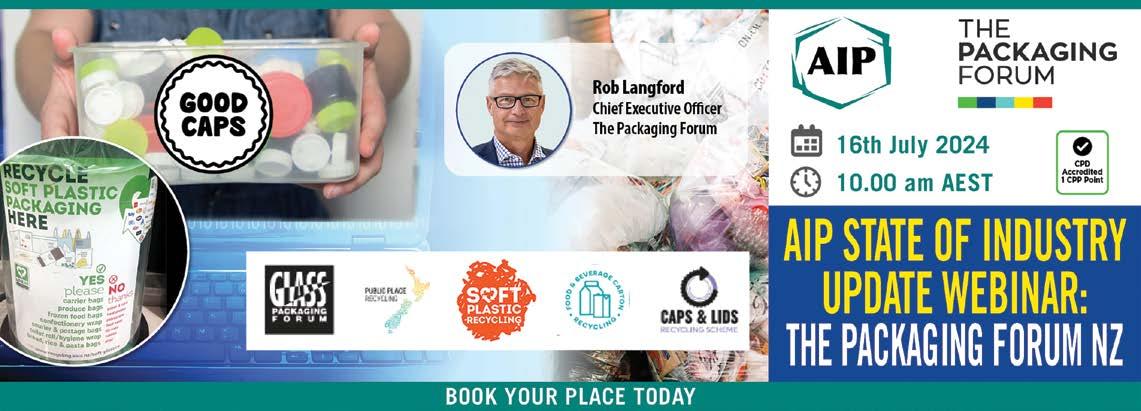
Dr Marshall’s view is just as timely and valid in 2024 as it was in 2019
The Earle lecture is a biennial award presented to a distinguished recipient who has made notable contributions to the impact of engineering and technology in New Zealand. It is hosted jointly by the Manawatu Branches of the Royal Society of New Zealand and the Institute of Professional Engineers and honours the contributions of Dick and Mary Earle, well-known to NZIFST, recognising their immense contribution to biotechnology and food technology regionally, nationally and globally.
Early in October, 2019 Dr Kevin Marshall, a long-standing Wellington member of NZIFST and the JC Andrews Awardee in 2006, delivered the 2019 Earle Lecture in Palmerston North on the subject “A Future for New Zealand Food”. In his opening comments, Kevin confessed to having known the Earles for his entire career with his professional and personal paths intertwining with Dick and Mary’s since the 1960’s. Indeed Kevin admitted that his first ever job application as a fresh BE graduate was to Dick and Mary at the Meat Industry Research Institute of New Zealand ... he was declined! A short while later when Kevin enrolled at Massey University for his post-graduate degree it was under the supervision of Prof Dick Earle.
Kevin has since experienced a long and distinguished career spanning an extensive cross-section of our key food export industries including dairy, fruit, meat and seafood. Kevin’s assessment of the prognosis for our food future derives from the insights enabled by that that deep knowledge of the New Zealand food industry, leading him to an alternative scenario from zealots who proclaim that our food future is vegan, and all animal farming in New Zealand must stop. Unlike those who proclaim doom unless we frame an animal-free future for Kiwi food, Kevin anticipates our core platform of animal-based food exports will be retained but reframed to a more sustainable model, supplemented by alternative uses of land in a few areas where overintensification of animal farming cannot be sustained even with better control practices.
In preface to his lecture, Kevin professed his belief (informed by his personal GP) that there are “no bad foods but there are certainly bad diets” implying that public and individual health responds to managing long-run consumption rather than maligning single foods. Later reflection identified that this philosophical tenet likely embodies a broader Marshall doctrine that oversimplification of issues by distilling them to isolated factoids commends ineffective solutions to problems and causes irrational choices to be made. That position seemed to be reflected in the underpinning logic of Kevin’s analysis of the prognosis for animal-sourced foods in our future that followed.

Kevin openly acknowledges that there are immense challenges ahead for our traditional food industries but is sure that these are not and must not be insurmountable. Indeed, in Kevin’s estimation the future for our animal farming food industry continues to be “exciting”.
Kevin admitted that this alternative view is not popular with the vocal echelons that name-call those professing that animal farming can be performed sustainably as “denialists” and then attack farmers as “social pariahs”. Kevin exemplified this, citing the reception given his colleague, Fonterra’s Dr Jeremy Hill who was recently on the end of a media roasting after presenting to a proteins conference a similar fact-informed assessment supporting a future, albeit a reframed future, for animal farming in New Zealand. Coincidentally, during this Earle Lecture I was seated with an anonymous local farmer and the relief with which Kevin’s alternative message was received was apparent on his face. At the conclusion of Kevin’s presentation this same farmer professed that this was “the first public meeting on the future of NZ farming I have attended where I have not felt hated”. Kevin’s lecture wove a path through familiar factoids and instead of declaring a bankrupt future for dairy and meat farmers arrived at New Zealand applying technological know-how to navigate a pathway that delivers sustainable animal farming to provide fully
It is not the world that is threatened, but the world as we know it, and time is short
sustainable animal-derived foods, particularly dairy and meat to premium markets.
Kevin’s initial focus was a situation analysis assembling the generally agreed factual context, framing future global food needs and requisite sustainability boundaries. This analysis drew on (and cited) a plethora of reports published in recent years, generally delivered by multi-disciplinary international assemblies of subject experts. These collective assessments intersect at a consensus requiring substantially more food (an increase of 70% in food supply by 2050) of higher nutritional quality whilst reducing the net environmental burden currently incurred. Intrinsic to that consensus was an expectation that Western consumers would substantially reduce consumption of animal-derived foods (meat and dairy). However in parallel with that reduction, emerging nations were anticipated to increase consumption of (sustainably produced) animal-based foods, particularly dairy products, in order to provide nutritional sufficiency. Indeed, under the Eat-Lancet scenario for universal nutritional sufficiency, global dairy production is required to double whilst meeting full sustainability standards.
Kevin willingly conceded that these expectations undoubtedly present immense challenges for the world but addressing the conundrum is not optional – it must be achieved for the future of our species. It is not the world that is threatened, but the world as we know it, and time is short.
However, Kevin’s treatise pointedly observed that the analysis of the global burden of animals-as-food producers is constructed around global average data for environmental impact with wide-ranging local deviations from those averages. At the unsustainable extreme is the practice of growing foods appropriate for human consumption to feed confined animals for inefficient conversion to meat and dairy. Simply to replace current worst performing sources of animalsourced food with the best-in-world achievements is to contribute a global improvement.
Relative to alternative sources of equivalent products, our New Zealand animal farmers operate at the most efficient, least environmentally impactful end of the sustainability spectrum. This reality is enabled by fortuitous natural advantages (eg a temperate climate supporting year-round forage growth allowing continuous free-range grazing) and technology gains enabled by highly educated, collaborative and motivated farmers being fast adopters of emerging science and technology. That same capacity of Kiwi farmers to adopt new technologies will facilitate ready implementation of environmental impact mitigation technologies as they emerge keeping our animal products at the leading edge of sustainable animal production. So rather than a threat to our established animal-based foods farming industry Kevin infers current pressures provide opportunity for a significant number of New Zealand’s farmers who already operate at the upper decile of global environmental efficiency to deliver nutrient-dense foods with demand in excess of what can be supplied from our geographic footprint. After all as Kevin observed, at best we can feed a population of only 50 million (or half of one percent) of the world’s 10 billion people. For the foreseeable future it is assured that world-wide demand for animal protein foods will exceed what can be sustainably produced on our land, even if consumption is limited to a rare luxury for affluent consumers. Our future positioning with animal-derived foods will be to affluent premium niches founded on
accountability to its clean-green-sustainable heritage. Critical to that opportunity will be providing robust evidence of sustainability and ensuring authenticity through tools of provenance traceability.
And what of the plant-based alternatives? Are they the solution they purport to be?
Lately a flood of foods mimicking milk and meat has populated supermarket shelves in New Zealand supermarkets, belatedly following the “analogue” trend present in other countries for many years. While these products are positioned as equivalents to traditional animal-derived foods, indeed they even wear their names – “milk”, “cheese”, “chicken”, “burger”– a quick review of their nutritional panels demonstrates that even at the most superficial standard of delivery of macronutrients most of these products fail to provide the nutrients for which these foods have become staples. A label review of protein levels provided by non-dairy products parading in the dairy case as equivalents to regular cows’ milk quickly shows that most provide significantly less crude protein than derives from the traditional product. The data shown in this address considered New Zealand market examples of almond, soy, rice, coconut and oat consumer “milks”; only the soy example approached the crude protein level of commercial cows’ milk. Almond “milk” provided a quarter of the protein content, oat one-eighth and rice and coconut had effectively no protein.
Milk is a dietary staple due to its delivery of essential nutrients, notably protein and calcium. But the unsuspecting shopper selecting a non-dairy alternative is potentially doing so oblivious to the shortchanged nutrition that choice provides. When comparisons are made on the basis of cost per gram of protein, every non-dairy option is more expensive than basic dairy.
That deficiency is evident even before attention turns to protein quality, a more opaque matter that is not directly evident to the consumer. As scientifically literate consumers we are the exception in realising that not all proteins are created equal. The reference standard for food protein quality is the digestible indispensible amino acid score (DIAAS). DIAAS data consistently shows that animalderived proteins have a higher sore than plant-sourced proteins, so requiring higher consumption of plant proteins to provide nutritional equivalence. Applying these standards to the protein delivery of dairy and non-dairy consumer products, nutritional equivalence for the protein provided implies soy beverage has twice the climate impact and oat milk 8 times the impact of true dairy milk.
This might be the appropriate time to cite Douglas Adams from Hitchhiker’s Guide to the Planet: “All you really need to know for the moment is that the universe is a lot more complicated than you might think, even if you start from a position of thinking it's pretty damn complicated in the first place.”
Kevin is eager to ensure that the complexities are not swept under the carpet and ignored. To do so may cause irrational choices, like totally replacing our animal economy with crops and trees with resultant economic and social turmoil. The choices we make need to be informed and evidence-based.
Hitherto Kevin suggests that such balance has not been evident in the discussion.
Our New Zealand animal farmers operate at the most efficient, least environmentally impactful end of the sustainability spectrum.
If you haven’t already decided to attend this year’s conference, you will soon be able to view the whole programme and see just how worthwhile the event will be. In the meantime keep an eye on the Conference page at www.nzifst.org.nz.
There is a link to the registration portal on the next page – right in the middle of the ad.
Don’t miss out.
EXECUTIVE MANAGER Wendy Bayliss PO Box 44322, Pt Chevalier Auckland 1022
New Zealand
Phone: 022 549 8483, Email: wendy@nzifst.org.nz
PRESIDENT Esraa El Shall esraaelshall@gmail.com
VICE PRESIDENT Bob Olayo bob@matt.nz
TREASURER Grant Boston grant@boston.net.nz

New Members
NZIFST welcomes the following new members and student and Graduate members
New Standard Members
Bryn Davies
Maud de Vries
Shirin Haydarzadeh
Ching Yi Law
Jean Lim
Rachel Miguel
Maylene Mikaere
Andrew Neeves
Jaclyn Ooi
Elizabeth Reid
Senior Technologist Fonterra
Quality Manager Dairyworks
Portfolio & Project Manager Fonterra
Product Development Technologist Dairyworks
Quality Coordinator New Zealand Nutritional Wellness
Project Manager Westland Milk Products
Product Development Technician Goodman Fielder Ltd NZ
Project Manager Sanford
Senior Development Technologist Fonterra
Head of Food & Nutrition, ANZ Connell Caldic
Gina Vance Verifier QAS Ltd
Malvika Vashisht
Quality Advisor Meadow Mushrooms Graduate
Deepshikha Deepshikha
Processing and growing
Green growers
Manpreet Kaur Graduate Lincoln University
Sadath Mirza
Shift Manager Venerdi Limited
Piumika Samanali Garagoda Arachchige Research Scientist Oritain Global Ltd. (Isotrace New Zealand Ltd.)
Rebecca Shepherd
Process Operator Callaghan Innovation
Dunyachut Vatananan Graduate Lincoln University
Sarah Kennedy Graduate University of Auckland
Students
AUT: Camille Hue, Ravi Kumar, John Kyalondawa. Lincoln University: Hoi Tung Chiu, Dhaval Patel, Bolang Su. Massey University: Md Faruk Ahmed, Francesca Armstrong, Amberleigh Dyer, Daryl Huang, Thamara Kumari, Ileperuma Achchige, Indresh Kumar, Meenakshee Mungro, Jaynil Patel, Zhi Wen Felicia Peh, Hunter Read, Kaushala Weerasinghe. University of Auckland: Li Ying Jessie Lau, Annie Man, Gillean Miller, Hafiz Toor, Yijun Yang. University of Canterbury: Timothy Hope. University of Otago: Gabrielle Balsom MA., Carisse Compendio, Divakar Dhakam, Kate Fitzpatrick, Sophie Law, Inchara Nagamangala Yoganarasimhaswamy, Maxwell Nally, Zoe Pardoe, Brianna Robertson, Andrew Searle
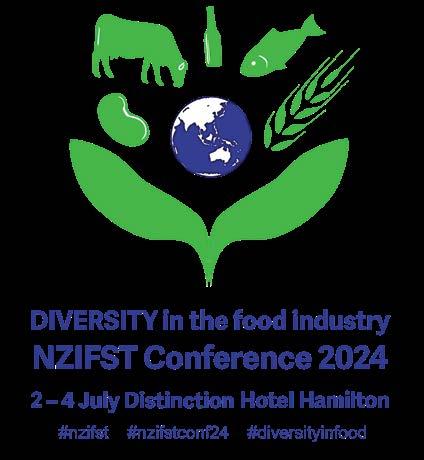
The Auckland Branch has had a lively start to Autumn so far! The committee is looking to run a more balanced mix of educational/ technical and informal/social events this year, with the goal that we will be catering to a broader range of the Auckland membership base, and hopefully have a more diverse range of members attending our events, and this was the first test run!
On the 12th of April, some of the committee members met up for an informal catch up and dinner together. It was a really nice way to connect with other food techies in the industry, who all come from very different backgrounds and walks of life, and to chat about how everyone got to where they are now over dinner and a few drinks on a Friday evening!
As always, we have a lot of future events and ideas in the pipeline, including our Branch AGM in June. If you have any suggestions, please get in touch and let us know what kind of events you would like to attend.
The Auckland Branch hosted John Lawson for a FED talk on 'Your Career Capital', where he discussed the importance of each type of capital (human, social and psychological) and how we share our stories at interviews to answer competency questions using the STAR-R (Situation, Task, Action, Result and Review) method. We had over 50 people registered for the webinar across the country. You can find the recording of the webinar NZIFST website under Members section.
Immediately after the FED talk, an in-person interview workshop was hosted by John Lawson at Fonterra Co-operative for students. The students were split into smaller groups to apply the learnings from the FED talk and answer a typical interview question, before sharing back with the wider group. The students were engaged throughout the whole session, then networkied with John and the committee members about their experiences post the event. Although this workshop was targeting student members, the committee members found the workshop very informative and have learned a thing or two for future interviews!
Special thank you to John Lawson for your time and sharing your knowledge with us. Thank you to Griffins for sponsoring snacks, Suntory Oceania for sponsoring beverages and Fonterra for sponsoring cheese and hosting the evening.
Neala HartIs it farewell to farms? A FED talk by Allan Hardacre
On the evening of April 4, as autumnal weather rapidly descended on us, Central Branch hosted a FED Talk presentation by Allan Hardacre titled “Protein from Plants – A Farewell to Farms … Or Is It?”
Allan has worked with grain foods for most of his career, initially focusing on starch which led him to become deeply involved with extrusion technology which in turn morphed into development of

plant-based meat alternatives using plant proteins. In that guise Allan led the development of New Zealand’s most successful domestic meat alternative products including the trail blazing Sunfed Foods Chicken-Free Chicken and subsequent range extensions.
In this FED Talk Allan provocatively speculated that this technology might risk the end of New Zealand’s animal farming industry. In fact it seems that he was echoing concerns expressed by Kiwi farmers when he talked to them about meat analogues. As we listened to Allan we had no way of knowing that a mere seven days after this talk SunFed would ironically announce that they could no longer sustain their faux-meat business in New Zealand and would be shutting up shop once current stocks were exhausted.
But that was for the future. At the scheduling of Allan’s talk, interest was high in learning about the technology that converts plant proteins into high moisture meat analogues credible enough to claim shelf space in your supermarket.
Allan first framed the problem of a world unable to use historical farming to deliver protein and especially animal-sourced protein to meet exploding demand. Inefficiencies of producing animal protein, natural resource impacts and increasing concern for animal welfare all limit the option to provide animal sourced protein for the masses via established farming practices. Plants, and particularly legumes, produce protein more efficiently than animals so offering a path to extend protein availability … if only it could be rendered as palatable as the meats we have learned to love. So that is the holy grail that has led to the rapid growth of the alternative proteins and plant-based meat substitutes industry.
Next Allan argued for New Zealand producing plant proteins from legumes, which transition would lead to a higher yield of food protein than is delivered from our current farming of animals. (It appears that importing raw materials due to the unavailability of a domestic plant protein in New Zealand is a significant issue that has led to SunFed’s subsequent demise.)
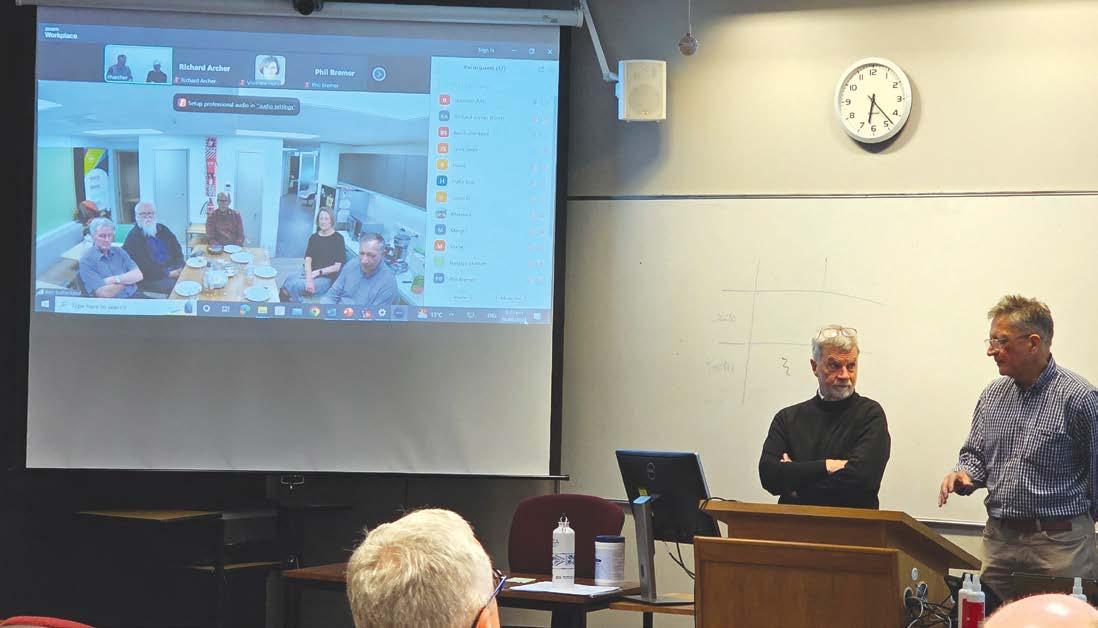

Finally Allan outlined the conversion of plant protein to meat substitutes through twin screw extrusion. For Allan the eureka moment arose when a batch was accidentally processed at a temperature thought to be too extreme, yet the product that emerged from the extruder had exactly the properties that had previously been unattainable. Having cracked the critical enabler, thereafter the product was optimised though formulation and process tuning to provide a credible and marketable meat substitute.
But is this approach likely to drive animals out of our food chain, and our pastoral farmers into croppers? We agreed this was a very unlikely scenario. The business failure of SunFed that would be announced a week later seems to confirm that for now.
Allan Main FNZIFSTA mere month after one Allan presented a Central-branch-hosted FED Talk, a similar event was slated with a second Alan (Welman) presenting another FED Talk from Palmerston North, this time detailing the history of industrial fermentation. Alan’s title was a little nebulous as most present knew that fermentation has been a basic food technology for thousands of years, not just “over one hundred years”. Alan’s point was to highlight the rapid emergence of new applications for fermentations and a new epoch in industrialisation of fermentation technology.
Dr Alan Welman is a Principal Research Scientist at Fonterra Research and Development. His PhD was in fermentation as was much of his past career and so he is very well placed to add to the Central Branch series on fermentation. Alan took a good look at fermentation through the ages leading into a look at food ingredients by fermentation today and in the future.
He started with Chinese kui beer from 7000 BC and records on Babylonian tablets recording beer culture in 4300 BC, right through the multitude of pickled vegetables and beverages up to today’s plethora of ingredients: enzymes, amino acids, flavours and flavour enhancers etc.
Remarkably it was only about 1857 that Pasteur convinced us all this was down to living, reproducing micro-organisms. And killing unwanted organisms became a key step in controlling industrial fermentations. Then 80 years later Jasper Kane convinced his bosses that large aerated submerged tank fermenters were possible and large, industrial scale processes really took off.
The strength of fermentation was always the metabolic power of organisms to transform chemicals from one to another. The 1953 revelation of the nature of DNA led to the GE revolution of the 60s and 70s and allowed industrialists to use their pet organisms to make all manner of stuff. A parallel is mammalian cell culture of the 90s enabling the muscle and milk components to be made today. Biosynthetic human milk oligosaccharides are already appearing in top-end infant formula.

Alan took us through the early Pfizer production of citric acid by fermentation driven by the demand from the popular cola drinks at the time. The new technology dropped cost 6-fold and demand exploded.
Alan speculated on the role of fermentation in filling the “protein gap” predicted to open up between protein able to be produced by traditional water-thirsty and land-hungry techniques, and what will be demanded by populations growing richer round the world. It is now possible to screen vast numbers of organisms for the genetic evidence of useful metabolic capability. Maybe we don’t need gene spanners so much and we can find what we need already exists. All this demands fermentable substrates of course (sucrose or glucose for instance) and reactor volume. Huge amounts of food demand huge amounts of both. But we had millennia of making beer, centuries of pickles and a full century of food ingredients. Alan led us to do our own speculation on what is next.
Richard Archer FNZIFSTDairy Innovations online presentation
On 26th March, Dr Anil Kaw, GM of Innovation at Westland Milk Products, delivered an online presentation to members – “Dairy Innovation, Emerging Trends and Issues”.
This informative talk looked at the Global Dairy Market Landscape including:
• Dairy alternatives and emerging technologies such as precision fermentation and the increasing number of plant based alternatives.
• Environmental impacts – balancing sustainability with the need for crucial vitamins and minerals that are obtained from dairy products, sustainable packaging, various waste and energy initiatives, improved feeding efficiency and other issues.
• Customer demands – health and wellbeing, planet friendly, natural, ethics, sensory experience (new tastes and textures) and convenience. Also tailored nutrition for different life stages – affected of course by the ageing populations and increasing demand for protein.
• Functional Ingredients – enhanced nutrition through the addition of ingredients like lactoferrin, milk fat globule membrane (MFGM) and alpha-lactalbumin to yoghurt, milk and cheese, and fermented dairy products with increasing links being seen between fermented foods and positive disease management.
Thank you to Anil for such a comprehensive and thought provoking look at the dairy industry.
Oji Fibre Solutions hosted 15 members of the Canterbury-Westland branch at their cardboard packaging plant in Hornby, Christchurch, on 16th April. We split into two groups for an introductory talk and tour. Each group was able to see the whole process from corrugation to finished printed cartons.
The plant has been in production for about 2½ years after a challenging commissioning period during Covid lockdown.
Andrew Bavis (Facility Manager) explained that the key focus of the factory design was a start-to-end flow for both safety and efficiency. Future proofing was also important and includes:
• A boiler design that allows for alternative fuels.
• A blue-line design that can be easily upgraded to red-line if/ when required.
• Automatic capture of fibre waste from the various processing steps to a central point ready for recycling.
The modern robotic conveyer system was impressive to see working. It is designed for smooth and easy transfer of components to any line or processing step without interrupting flow.
We learnt about the plant’s highly automated and integrated scheduling system which facilitates short lead-times for customers as well as allowing for some short runs where necessary.
Thanks to Andrew, David Norris (Account Manager) and Shelly Dale (Technical Manager) for making this visit possible and answering all our questions. It was a fascinating insight into modern packaging production.
Margot Richards
Marcus Loi has stepped in as Chair of Waikato Branch.
The branch has two exciting upcoming events. First, the AGM in June, including a FED talk by Margaret McCracken from Canary Foods, followed by a joint networking event in July. Stay tuned for more information, and we look forward to seeing you at these events.
Marcus Loi
After a quiet start to the year, it has been a busy month of May for the OS branch.
A Careers information session about “Finding your Graduate Role” was held for over 60 University of Otago students on 1st May, hosted by Prof Aladin Bekhit and Lynley Soper (University of Otago Career Development Centre). The main University of Otago Careers Expo with a range of industry representatives is planned for Wednesday 7th August. Pencil this into your diaries now and expect more information soon.
The annual NZIFST/Department of Food Science International Dinner and Student Prizegiving were jointly held on Thursday 2nd May. This year, over 60 attendees shared dishes from around the world, with the size of the event getting closer to pre-COVID levels. The winner of the best main went to Rizwan Matloob Ellahi and Jini John for their delicious Pakistani BBQ platter, including Seekh kebab, Tikka Boti and Malai Boti, served with Pakistani Style Pulau
The Dessert champion, Carisse Compendio together with Graham Eyres (left; OS branch chair) and Pat Silcock (right; OS branch Board Rep)

Chris Hopkins presented an informative national Webinar titled "Advances in sensors, robotics, and machine learning in the meat industry"
Along with the feasting, the annual student prizegiving recognised the success of the next generation of food scientists.
Congratulations to the following winners:
NZIFST Prize in Food Science 2023 – Sophia Hynds
NZIFST Prize in Consumer Food Science 2023 – Emily Kippenberger
J. Cowie Nichols Prize in Food Science 2023 – Marco Davis
Brenda Bell Memorial Prize in Consumer Food Science 2023 – Kim Shanks
Ina and Leslie Black Prize in Food Science (top student in FOSC111) 2023 – Saskia Broekhuizen
Kraft-Heinz Food Science Scholarship 2024 – Hannah Coulston Bee Nilson Award 2024 – Marco Davis.
In May, the OS branch hosted the National FED talk by Chris Hopkins, Director and Business Owner, on "Advances in Sensors, Robotics, and Machine Learning in the Meat Industry." Chris Hopkins, a University of Otago graduate, serves as a Director and business mentor, contributing to their growth and success. Currently, he chairs Dunedin International Airport Ltd and serves as a Director of Oakwood Group Ltd, Port Otago Ltd, Health Central Ltd, and Farra Engineering Ltd. With a passion for productivity and innovative solutions, Chris has founded multiple tech startups. This highly successful hybrid event had more than 30 people attending in person at the University of Otago and around 30 attending virtually from all around the country.
Biniam Kebede and Graham Eyres
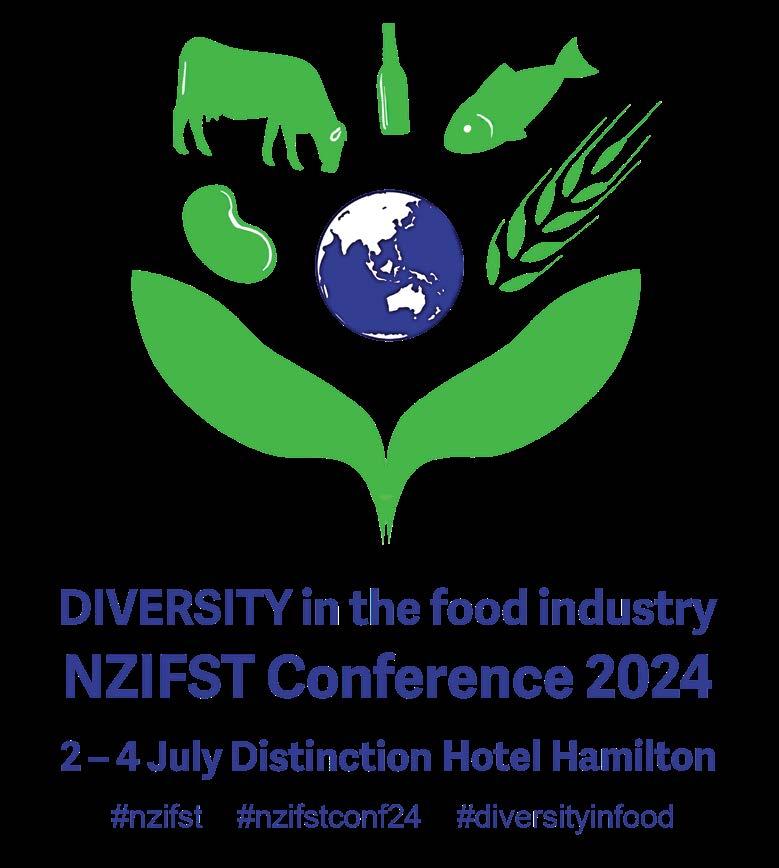
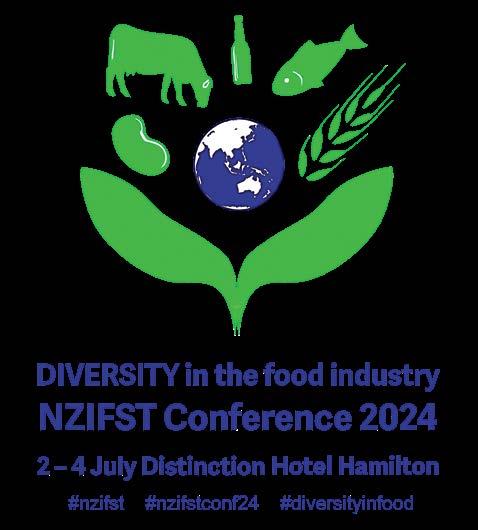

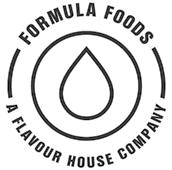


NZIFST President
Esraa El Shall
esraelshall@gmail.com
NZIFST Vice-President
Bob Olayo
NZIFST Executive Manager
Wendy Bayliss PO Box 44322
Pt Chevalier
Auckland 1022
New Zealand
Phone: 022 549 8483,
Email: wendy@nzifst.org.nz
Website: www.nzifst.org.nz
Rob Archibald
Amit Taneja, Fonterra
Amy Pitt, Tetrapak
Anne Scott, FoodNZ
Biniam Kebede, University of Otago
Evelyn Fraser, Consultant
Hamish Conway, Goodman Fielder Ltd
Janis Swan, University of Waikato
Jolin Morel, Callaghan Innovation
Neala Hart, Fonterra Brands
Paulette Elliott, KPMG
Richard Gray
Wendy Bayliss, NZIFST Executive Manager
Welcome to the 2024 Annual NZIFST Conference in Hamilton. The theme of the conference is Diversity in the Food Industry. We tell each other that we need diversity but we are drawn to people who look the same, who think the same, who have experiences in the same markets, who use the same processes and so we copy things that others do because we can see that they are successful. This strategy of being “first to be second” reduces risk but can also increase competition and hence reduce reward unless we can find that point of difference that is valued by the market.

Finding that point of difference is explored at this conference through plenary sessions on Diversity of Thought, Diversity of Markets, Diversity of Processes, and concludes with two speakers looking at the future opportunities that a diverse workforce presents and what opportunities AI presents for the Food Industry. As we grapple with future opportunities and challenges, diversity provides a way of fostering innovation, creativity, and better problem solving by bringing together people with different backgrounds and viewpoints. Conference speakers will address the benefits of diversity and balance that with the desire of some for similarity.
As with recent conferences the New Zealand Food Safety and Science Research Centre (NZFSSRC) will run two Food Safety focused sessions. The NZIFST is grateful to the NZFSSRC for enabling the conference to attract two distinguished international speakers Dr Lone Jespersen, Principal, Cultivate SA, Switzerland and Dr Michelle Danyluk, Immediate Past President of the International Association for Food Protection, Florida.
With over 80 speakers presenting at the conference, the Organising Committee is delighted with the diverse range of topics being covered and appreciative of the willingness of each speaker to share their knowledge with delegates at the conference.
The organising committee hopes delegates will enjoy this conference and be inspired to embrace diversity in its widest context.
The Institute is pleased to welcome our Plenary Speakers.

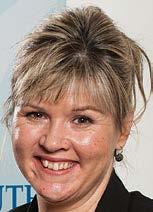

Ian joined KPMG in the London office in 1992, moving to New Zealand in 1996. Ian was admitted to partnership in 2004 and appointed as Global Head of Agribusiness for KPMG in 2013, leading a network of KPMG Professionals that now spans over 50 countries. Ian is a licensed auditor, working with food and fibre clients including businesses in the dairy, red meat, fishing, horticulture and viticulture sectors. Ian is considered to be one of the leading strategic thinkers on Agribusiness in New Zealand. He presents around the world on the future of food production, processing and consumption articulating a vision for a food system that delivers sufficient nutrition to the world in a sustainable manner. He is the lead author of the KPMG Agribusiness Agenda publications which have been published annually since 2010.
Establishment Director - Future Food Aotearoa (FFA)
Katy is passionate about growing NZ’s F&B industry in bold new ways, and has recently taken up the role as Establishment Director for Future Food Aotearoa. The new movement is driven by nine founders wanting to propel a new generation of Future Foods businesses to be worth over $500m.
Until recently Katy led Callaghan Innovation’s F&B sector mission, working with more than 400 of New Zealand's most innovative and promising F&B businesses. Katy has worked in a variety of local and international leadership roles across top FMCG, Ingredients and Foodservice companies, launching over 1000 F&B products along the way.
Peter is an experienced business leader having had GM & CEO roles in New Zealand, Australia and USA. He has worked across a diverse set of sectors including FMCG, the primary sector and brewing. Companies he has had senior roles in include Lion, Campbell Arnotts, Goodman Fielder, Farmlands & Sanford. His modus operandi has been as a leader of change with an ambition to unify the organisations he works in behind a motivating vision, deliverable strategy and a clear understanding of the role everyone in the organisation needs to play to achieve the vision and deliver the strategy.
With functional experience across Sales, Marketing and Finance he sees innovation as a "must do" for any organisation to prosper in a constantly changing world. He uses the tree analogy where when a tree stops growing it starts dying.
"Businesses have to focus on growth and you cannot grow without innovation. Innovation needs to be all encompassing - not just product. The way we work, our routes to market, consumer communication and interaction, what the product offer is, pricing - no function or area of work should be without an innovation agenda." he says.
Peter will talk of his experiences in innovation and identify what he sees are "must does" for NZ businesses to successfully innovate.
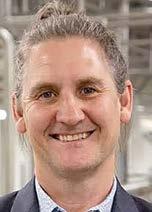

Executive Director, Te Puna Whakaaronui, New Zealand’s Food and Fibre Sector Think Tank
Jarred Mair is the Executive Director of Te Puna Whakaaronui – New Zealand’s food and fibre sector think tank. Tasked with providing long-term sector insights and targeted inquiries to help the sector stay on the pulse of geopolitical, consumer, regulatory, technological and system changes to inform successful change management across the sector. Prior to this, Jarred has held senior public sector leadership, policy development and consulting roles within New Zealand.
Principal and Founder, Cultivate SA
Lone Jespersen is published author, speaker, and the principal and founder of Cultivate SA, a Swiss-based organisation dedicated to eradicating foodborne illness. One culture at a time.
Lone has worked with improving food safety through organisational culture improvements for 20 years since she started at Maple Leaf Foods in 2004. Lone chaired the Global Food Safety Initiative (GFSI) technical working group “A Culture of Food Safety”, chaired, the International Association of Food Protection (IAFP) professional development group “Food Safety Culture”, and was the technical author on the BSI PAS320 “Practical Guide to Food Safety Culture.” Lone holds a Ph.D. in Culture Enabled Food Safety from the University of Guelph, Canada and a Master in Mechanical Engineering from Syd Dansk University, Denmark and is a visiting professor at the University of Central Lancashire, UK. Lone serves as chair of the IFPTI board and as director on the STOP Foodborne Illness board.


Chief Scientist and co-Founder, Oritain
Russell is an analytical chemist who started his career applying trace metal and stable isotope analyses to trace ocean processes. As a Professor at the University of Otago, Russell established the Forensic Analytical Science Major and provided forensic evidence to the courts. Russell founded Isotrace in 2003 and then co-founded Oritain in 2008. From 2012 to 2016 he was seconded to the IAEA/ FAO to establish a food traceability programme. Russell retired from his academic position in 2021 and has since been full-time with Oritain as Chief Scientist.
Dr. R. Paul Singh is a Distinguished Professor Emeritus of Food Engineering at the University of California at Davis. He received his degrees in agricultural engineering from Punjab Agricultural University, India, (B.S); University of Wisconsin, Madison, (M.S.); and Michigan State University, East Lansing, (Ph.D.).
Dr. Singh’s research involves computational modeling of food processes, sustainability of industrial food manufacturing, design of novel food processing equipment, and study of food digestion for improved bioaccessibility of nutrients in the human body.
He is an author or coauthor of 17 books, 3 patents, and 290 refereed papers. His co-authored textbook (with Dennis Heldman), Introduction to Food Engineering, is translated into 7 languages and used worldwide in food engineering education.
Dr. Singh is a Fellow of the Institute of Food Technologists, the American Society of Agricultural and Biological Engineering, and the International Academy of Food Science and Technology. He received the Kishida International Award in 2007 and the 2013 Massey Ferguson Gold Medal for education from the American Society of Agricultural and Biological Engineers. In 2008, he was elected to the US National Academy of Engineering. In 2010, the Institute of Food Technologists awarded him the Nicolas Appert Award—the highest food science award in the United States. In 2015, he received the World Agriculture Prize from the Confederation of Higher Education Associations for Agriculture and Life Sciences. In 2018, he received a Doctor of Science, honoris causa, from the University of Guelph, Canada. Dr. Singh is a Co-Editor-in-Chief of the Journal of Food Engineering and a member of the Food and Nutrition Board of the US National Academy of Sciences.


Navigator at Callaghan Innovation
With a background in food and beverage, manufacturing and AgTech, Jenny prides herself in being able to have a conversation with a customer from any sector and business stage. “I can understand their needs and how Callaghan Innovation can guide them towards the expertise and resources they need to advance their business.”
She has a long track record working in the innovation ecosystem, first in her native Scotland and now with Callaghan Innovation across New Zealand.
Jennifer Yee Collinson, Cuisine/Aotearoa New Zealand Top 50 most influential and inspiring women in food and drink, 2023.
Jennifer is a food writer, Random House author, dietitian, food scientist, and food tourism entrepreneur. Her career spans public health, R&D, nutrition communications, management of clinical trials, consumer and regulatory affairs; she has worked with Auckland District Health Board, Tasti Products, Bluebird Foods, Frucor Suntory and was an inaugural member of the consulting group Foodinc. Clients have included FSANZ, the Advertising Standards Authority as well as producer boards, corporates and SMEs. As an enabler on an MPI funded sustainable food and fibre futures project with the Foundation for Arable Research, she’s connected Wairarapa growers of durum wheat with artisan bakers, chefs, and pasta makers. She is an industry advisory panel member of the High-Value Nutrition (HVN) National Science Challenge and on the NZ Food & Grocery Council Health and Regulatory working group. In the mid-90s she established Culinary Journeys, regional food adventures in Aotearoa & Vietnam. Her food writing has appeared in numerous publications including a recipe supplement for the 2023 TVNZ+ food documentary series ‘Sik Fan Lah!’ on Chinese Identity and food culture in Aotearoa. When she’s not supporting the food sector as a culinary, nutrition and regulatory affairs specialist, she runs masterclasses and events in collaboration with emerging writers, chefs, and food photographers.

Chief Executive, TupuToa
Anne Fitisemanu has been the Chief Executive for TupuToa since 2017. In that time, she has been delivering on the organisation’s vision to grow Māori and Pacific leaders for a greater Aotearoa, with exponential growth in the number of interns and partners TupuToa delivers for.
Of Niuean, Samoan and European heritage, Anne has not only led the growth of TupuToa beyond Auckland to other parts of New Zealand, but also overseen the creation of international opportunities for Māori and Pacific young people.
An eternal optimist, Anne’s passion for creating a more inclusive world is infectious. She is known for her energy, enthusiasm, innovation and entrepreneurship. Her career has spanned leadership roles in key sectors including health, education, local government and not-for-profits committed to equity and growing people.
See the conference website for the more information about conference programme and speakers HERE.

Located only minutes from the Hamilton city centre and with The Base Hamilton, one of New Zealand's largest shopping centres, only a few minutes’ walk away, the 4-star Distinction Hamilton Hotel and Conference Centre offers our delegates spacious conference and exhibition rooms all on the ground level.
Parking in the Hotel’s conference centre car park is FREE to all delegates and guests.
The Registration Desk is located in the Foyer adjacent to the Exhibition Hall and is your first point of call for all matters associated with the conference, from programme and amendments to social function ticket purchases.
The registration desk will be open daily from around 07:30 until end of sessions.
Registration contact – phone Wendy 022 549 8483
If you are making a presentation at the Conference you are requested to meet with the A/V technical support staff at least 1 hour prior to the presentation to load and check your material. Registration staff will direct you to the “Speaker’s Room”. Alternatively, please contact Anne on 021 901 884.
Name badges must be worn at all times. Your name badge is your ‘entry ticket’ to the technical sessions of the conference and into the refreshment breaks.

All morning teas, lunches, afternoon teas and the evening social functions will be served in the Exhibition Hall.
by University of Otago, Food Science Department
All posters are available for viewing in the Foyer at all times. Authors are expected to be in attendance with their posters on TUESDAY from 17:00 to ~19:00. Student Poster winners will be announced at the Awards Dinner on Wednesday evening.
The organisers have made every effort to secure the speakers as advertised but reserve the right to amend the programme without recompense to the delegates.
You are reminded that you are responsible for the security of your own items. Please do not leave personal items unattended. Whilst every care will be taken by the venue and organising personnel, Distinction Hamilton Hotel and Conference Centre, and the NZIFST Inc. will not be held responsible for any loss or damage to any property of any delegate or exhibiting company, by theft or fire or any other cause whatsoever outside the control of the venue.

In the event of an emergency please follow the directions of the venue staff.
Warn others in the immediate area as you evacuate via the nearest exit.
Fire hoses and fire alarm switches must remain visible and accessible at all times
Personal details provided by you on the registration form are confidential to NZIFST. These will be used by NZIFST for conference purposes (such as registration, name badges, delegate lists, etc) and if so authorised, made available to delegates and conference exhibitors and sponsors; or used for general contact purposes by the NZIFST Secretariat. Your details will not be passed onto any third party.
Conference Room 1, Distinction Hamilton Hotel and Conference Centre.
Part I: Wednesday 3rd July, 13:15 – 14.00
Part II: Wednesday 3rd July, from 19:00 at the NZIFST Awards Dinner

Additional tickets for all social functions are subject to availability and may be purchased from the registration desk at the conference.
NZIFST Awards Dinner
Conference Room 1, Distinction Hamilton Hotel and Conference Centre.
Wednesday 3rd July, 19:30 - 23:30 with pre-dinner drinks from 19:00.
A sumptuous dinner prepared by the Hotel’s Chefs will support the presentation of NZIFST Awards including
• The J C Andrews Award, the Institute’s most prestigious Award.
• NZ Food Industry Lifetime Achievement Award
• The Ron Hooker Award for Substantial Service to the NZIFST
• New Institute Fellows
• NZIFST Award for Exceptional Leadership in the Food Industry
• Emerging Leader Award
• Student Poster Prizes
• 3 Minute Pitch Presentation Prizes <endbulletlist>
• MPI Award for a Significant Contribution to Food Safety – an Industry Award
Come and recognise your fellow members.
One ticket included in the full (Delegate, Speaker and Student) registrations, additional tickets ($100)
Tuesday 2 July, 17:00 – 19:00, Exhibition Hall. You are invited to join us for light refreshments at the close of sessions on the first day. One ticket included in the full (Delegate, Speaker and Student) registrations or Tuesday Day Registration.
Early Career Foodies Function – Sponsored by Callaghan Innovation
Tuesday 2 July, 19:00 – 21:00, Conference Room 5
Network with your peers in this fun pub quiz style event. This event is for our under 30 year-old students and early career graduates. A light dinner will be served. (By invitation only)
Tuesday 2 July, 19:00 – 21:00.
Learn how beer is made, and sample beers that are fresh as they can possibly be just a short walk from the conference venue at Brewaucracy Brewing. Light snacks and finger food provided. Cash bar after the tasting session. By reservation only, numbers are limited so please scan the QR code to register.

Additional tickets for social functions are subject to availability and may be purchased from the registration desk at the conference.
The following awards will be announced and presented at the NZIFST Awards Dinner on Wednesday 3rd July.
The J C Andrews Memorial Award is the most prestigious award presented by the New Zealand Institute of Food Science and Technology (Inc.). It is presented in memory of Massey University’s first chancellor, Dr John Clark Andrews, who proposed that a food technology degree course be established at Massey University.
This prestigious award honours senior Institute members who have made a substantial contribution to food science and technology and leadership in the food industry.
The J C Andrews Award winner will be announced and will give a public address after lunch on Wednesday 3rd July in Conference Room 1.
The Lifetime Achievement award (previously known as Distinguished Service Award) recognises long and exceptional services and/or contributions to the New Zealand Food Industry in a scientific, technical, teaching, marketing, or managerial role.
Fellowship is an honour bestowed upon a member to recognise their substantial contribution to the profession of food science and technology, through outstanding service in the following areas:
• Research and development leading to the creation of new knowledge, or,
• Technology transfer and education, and;
• Development of the food industry, including promotion of its ethical standards and public image, or,
• Development of the affairs of the Institute, its Branches or Divisions.
Established to honour and recognise the outstanding contribution given by Ron Hooker to the NZIFST since its formation in 1965, this award is to recognise significant past or current service or contribution to the NZIFST, developing the affairs of the Institute, its Branches or Divisions.
This award acknowledges leadership excellence in Food Science and Technology over and above business as usual for a sustained period.
This award is to recognise a young technologist/scientist/engineer (aged 30 years or under) for their endeavour or achievement, and leadership potential in the food industry.
Recognises the best Posters submitted by student members of the Institute
Recognises the best elevator pitches presented by students members of Institute
The Award recognises developments in a process or operation – either by an organisation, team or individual – to improve food safety across, or in a particular part of, the food chain.
This could include developing or improving a food safety process or operation. It could be in one sector, or across a few sectors, and is not time specific.
Places limited at the dinner – reserve yours now
Registration opens
Plenary A: Diversity of Ideas
Cultural Welcome / Mihi Whakatau (tbc)
Plenary A1: Ian Proudfoot (KPMG)
Plenary A2: Katy Bluett (Future Food Aotearoa)
Chair sums up session Refreshments
12.30-1.30
Refreshments
Strategic Refresh Update - Learn about all the work that has been going on behind the scenes since last years conference - Led by Esraa El Shall, NZIFST President
Plenary C: Diversity of Markets
Plenary C1: Peter Reidie (Consultant)
Plenary C2: Jarred Mair (MPI)
Plenary C3: Lone Jespersen (Cultivate SA) Refreshments
Posters & Refreshments
Registration opens
Plenary E1: Russell Frew (Oritain)
Plenary E: Diversity in Process/Products sponsored by Bio-Strategy
Plenary E2: Harraways Visiting Professor - Prof Paul Singh (UC Davis)
Early Career Foodies' Function Sponsored by Callaghan Innovation Chair sums up session Refreshments
AGM
Plenary G1: JCA Winner's Address
Plenary G2: Jenny Yee Collinson (Culinary Journeys) Refreshments Combined IChemE and NZIFST Brewaucracy Brewery Tour
Plenary E3: Jenny Brown (Callaghan Innovation) and Al Baxter (NZFIN)
Plenary J1: Anne Fitisemanu (TupuToa)
Plenary J2: TBC
Closing Plenary J3: WRAP-UP
& announcement of
Sponsors and Exhibitors
The NZIFST acknowledges and appreciates the generous support of our many sponsors and exhibitors. You will have opportunity to view exhibits and meet the staff during the refreshment breaks. Delegates are encouraged to support the exhibitors and sponsors both during and after the conference.
Principal Sponsor
Matt Solutions/Formula Foods www.matt.nz/www.formulafoods.co.nz
Major Sponsors
Pacific Process New Zealand www.pacificprocess.co.nz Neogen www.neogen.com
Exhibitors
Eurofins www.eurofins.com
OneLab www.onelab.co.nz
John Morris www.johnmorrisgroup.com
Anton Paar www.anton-paar.com
Themo Fisher Scientific www.thermofisher.com
Lab Supply www.labsupply.co.nz
Hill Labs www.hill-labs.co.nz
Bio-Rad www.bio-rad.com
Food Tech Solutions www.fts.co.nz
MPI www.mpi.govt.nz
Mediray NZ www.mediray.co.nz
Foss www.foss.com.au
Bio-Strategy/DKSH www.bio-strategy.com
EHEDG https://www.ehedg.org/new-zealand
Hygiena www.hygiena.com
Microanalytix www.microanalytix.co.nz
Specialty Sponsors
Student Poster Competition University of Otago - Food Science Department www. otago.ac.nz
3 Minute Pitch Competition Riddet Institute www.massey.ac.nz
Early Career Foodies Function Callaghan Innovation www. callaghaninnovation.govt.nz
Daily Refreshment Breaks Caldic www.caldic.co.nz
Barista Coffee Eurofins www.eurofins.com
Plenary Session
Bio-Strategy/DKSH www.bio-strategy.com
Concurrent Sessions Pharmanz www.pharmanz.com
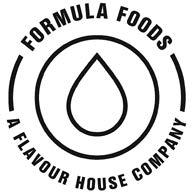
In a world where sensory experiences define our choices, the flavours, colours, and ingredients in our food play a vital role. For over 37 years, Formula Foods has been at the forefront of enhancing these sensory elements. Dedicated to innovation and quality, Formula Foods is more than a manufacturer—they’re creators of delightful experiences that elevate everyday products.
At the heart of Formula Foods is a passion for flavour. Recognising that flavour encompasses taste, smell, sight, and even sound, their experts craft nuanced, memorable profiles. Whether it’s the perfect tang of a citrus blend or the warmth of a spice mix, Formula Foods' flavourists blend art and technology to create resonant flavours.
Formula Foods views client relationships as partnerships. Working closely with food and beverage manufacturers, they provide tailored
solutions and collaborative support to ensure product success. Offering the lowest minimum order quantities (MOQs) and the capacity to supply 1 tonne IBCs, their five-day lead time on custom formulations sets them apart. This customer-focused approach has earned them a reputation for reliability and excellence.
Colours are crucial in food perception, evoking emotions and influencing taste. Formula Foods offers a range of vibrant, natural colour solutions that meet high standards of safety and stability. Their expertise in colour science ensures every hue enhances appeal. Beyond flavours and colours, Formula Foods provides essential ingredients like oleo resins and antioxidants, extending shelf life without compromising quality. Each ingredient is meticulously sourced and tested, reflecting their commitment to excellence and reliability, with every batch traceable to its source.
What truly sets Formula Foods apart is their dedication to innovation and sustainability. They've never missed an order, even during the COVID-19 pandemic, thanks to their resilient supply chain. Investing heavily in R&D, they stay ahead of industry trends and consumer demands, offering cutting-edge solutions that enhance product performance and align with the growing demand for natural and sustainable ingredients.
Blending creativity, science, and a commitment to sustainability, Formula Foods continues to lead the way in shaping the future of the food and beverage industry.
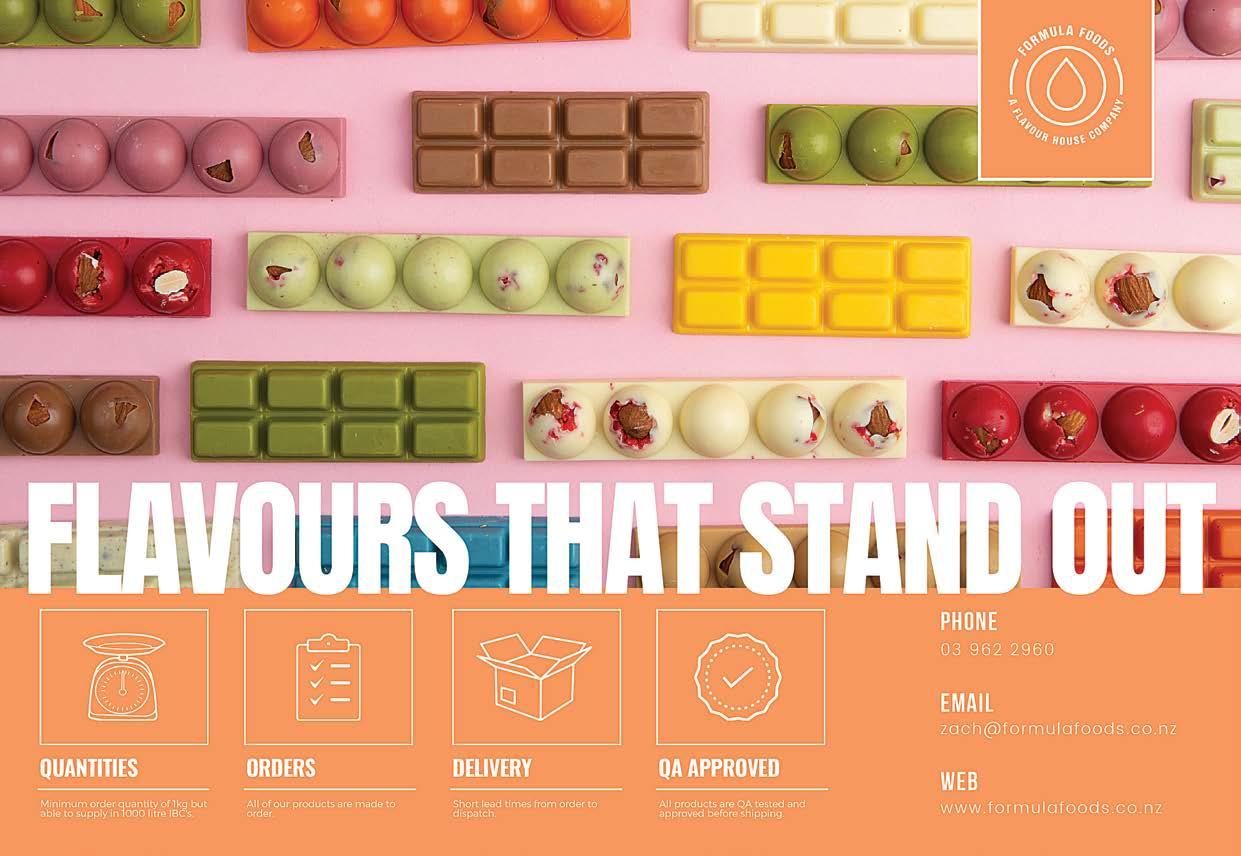

Extend Shelf Life Naturally with the Dansensor CheckMate 4 O₂, CO₂ and N₂(BAL) solution, Exclusively from Matt Solutions.
For professionals in the field of modified atmosphere packaging (MAP) and gas flushing, achieving precision and reliability is critical. The Dansensor® CheckMate 4 analyser, available exclusively through Matt Solutions is specifically designed to meet these high standards. This compact, tabletop instrument offers unparalleled accuracy and a user-friendly experience, making it an essential tool for those utilising MAP technology.
Your MAP and Gas Flushing Processes
The Dansensor CheckMate 4 excels in delivering precise and consistent measurements swiftly, ensuring the optimal gas mix for your products every time. Its intuitive touchscreen interface significantly reduces the training time required for new operators, enabling quick proficiency. Individual user logins ensure restricted access to various functions, enhancing data security and traceability, crucial for quality assurance in MAP.
Advanced Data Management for full traceability, trends and tracking
Incorporating advanced data management capabilities, the Dansensor CheckMate 4 can save test settings for up to 1,000 products, ensuring comprehensive and comparable data records. This is essential for maintaining consistent quality across different batches. Switching between different product test settings is simplified, either on-screen or via the optional barcode scanner.
Maximise Reliability and Uptime
– no more downtime for repairs or calibration
Designed with reliability in mind, the Dansensor CheckMate 4 features an improved sample system and pump to prevent blockages and ensure smooth operation. Its unique design, comprising a control unit and an exchangeable (swapable) sensor module, allows for quick on-site updates with a newly calibrated module, significantly reducing service downtime and costs. This ensures your MAP processes run continuously without interruption.
Comprehensive local support from Matt Solutions
Matt Solutions provides comprehensive local support. Their commitment extends beyond the product to include local repair services, calibration, and application support. To ensure uninterrupted operation, Matt Solutions offers free loan machines in the event of breakdowns or calibration needs, ensuring your operations can continue without a hitch.
The Natural Choice for Preservative-Free Shelf Life Extension
The Dansensor CheckMate 4 analyser, backed by Matt Solutions, is the premier choice for professionals seeking a reliable, accurate, and user-friendly headspace gas analyser for MAP and gas flushing applications.
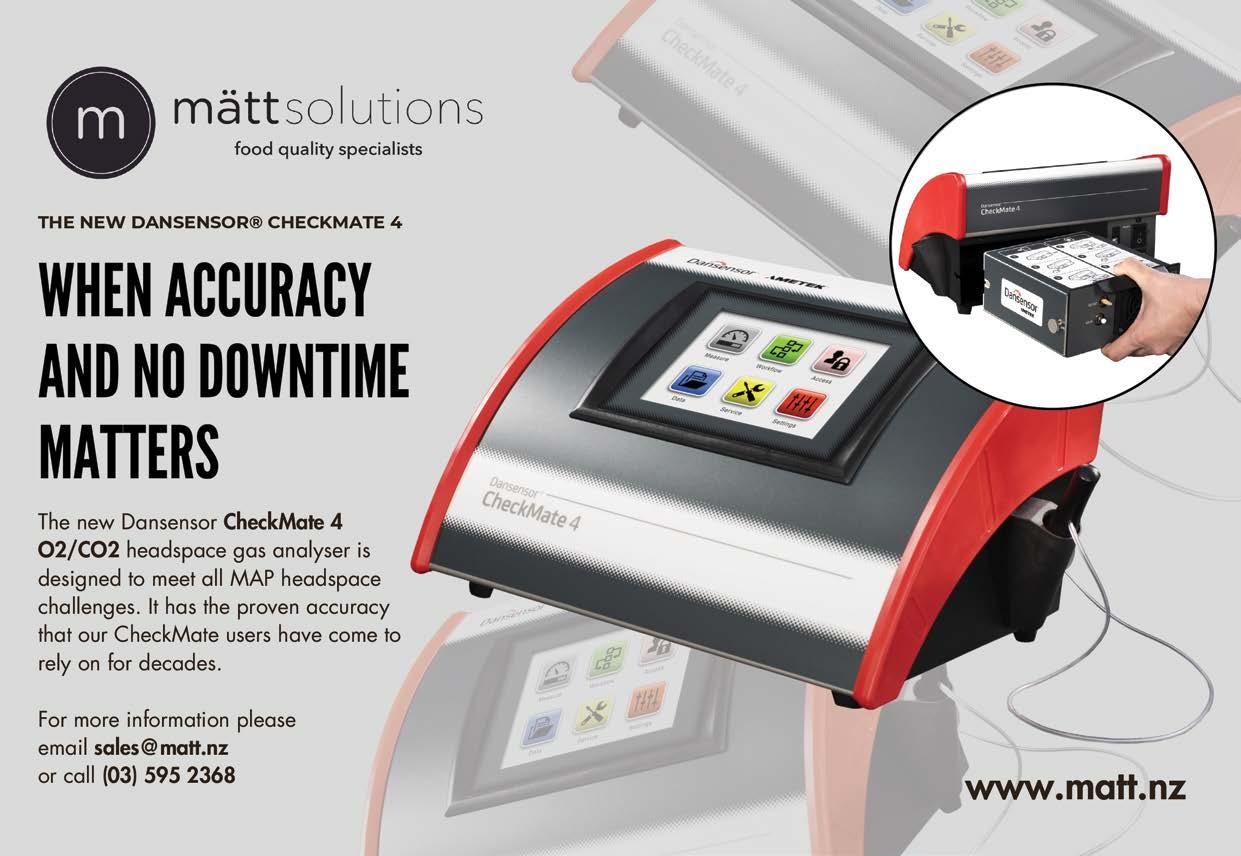

When you operate on the front line of food safety, you need an ally that has your back. With industry expertise and products that give you the confidence you need to make critical decisions in a timely manner, Neogen® is that ally.
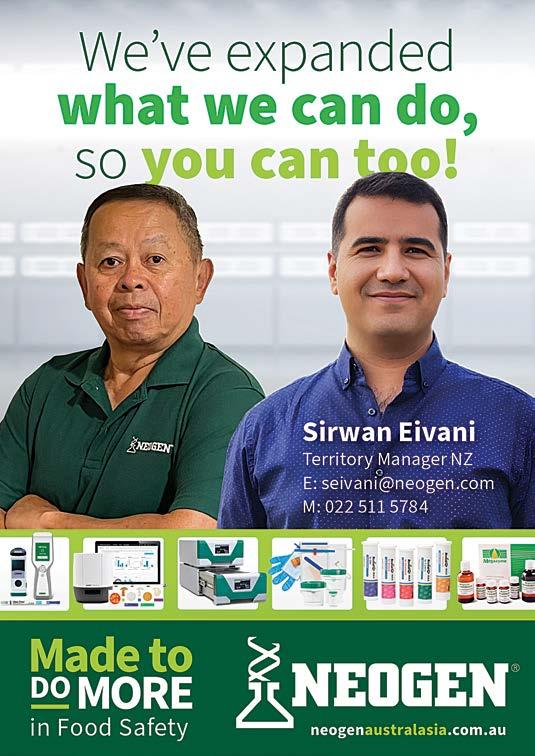
Already one of the world’s leading food safety companies, Neogen radically expanded its capabilities when it acquired the 3M Food Safety Division in late 2022. Not only were a host of proven and industry-standard product lines added to the portfolio, but their network of technical experts doubled. Now more than 300 scientists and engineers are tasked with the ongoing development of a wide range of rapid, reliable, and user-friendly systems designed to meet the specific requirements of customers in over 140 countries.
Here in New Zealand, Neogen also enjoys a strong local presence. Their expanded team provides both sales and technical support with local warehousing and local equipment servicing, meaning fewer delays and a better customer experience.
Like everyone at Neogen, Territory Manager for New Zealand, Sirwan Eivani, and Technical Support Specialist, John Fam, are committed to fuelling a brighter future for global food security. They work directly with customers and distributors across the country to ensure they receive unparalleled service and support.
Neogen’s expansive portfolio includes systems for allergen testing, hygiene monitoring, rapid indicator solutions, microbial detection, culture media, pathogen detection, food quality analysis, natural toxin testing, UHT/ESL testing, sample collection, analytics and more.
The solutions Sirwan delivers in New Zealand are designed to allow customers to make critical decisions confidently and quickly, to improve efficiency, add value, and contribute to better outcomes for businesses and consumers alike.
This year marks the fortieth anniversary of one of Neogen’s flagship product lines, Petrifilm Plates. It was a game changer when it was introduced in 1984 and its continued relevance in modern labs is a perfect example of how Neogen is relentless in its pursuit of more effective and efficient solutions. Today the Petrifilm Plate Reader Advanced aligns seamlessly with Neogen Analytics, as just one example of the benefits of an expanded product range and the ongoing evolution of established technologies.
Neogen has expanded what they can do, so you can too.
As Major Partners of the NZIFST Conference and Awards in Hamilton, Sirwan and John will both be on hand to answer any questions you might have about how Neogen can benefit your food safety programme.



Smith (left) and Tanmoy Ghosh look forward to meeting you on the Pacific Process
Collaborative Leaders in Comprehensive Dairy and Food Processing Solutions
In the intricate landscape of food processing, the presence of reliable partners is paramount.
Brown Brothers Engineers Flow Technology and Pacific Process stand as frontrunners in this regard, uniting their strengths to offer unparalleled expertise and support to food processing facilities across New Zealand. Together, they provide a comprehensive suite of solutions offered by SPX FLOW, ensuring that the market is fully covered, from project inception to ongoing maintenance and support.
A Unified Front: BBE FlowTech and Pacific Process have forged a strategic partnership to offer unparalleled expertise and support to food processing facilities across New Zealand. Together, they provide a full range of solutions incorporating world renowned, reputable product ranges from SPX FLOW, catering to every stage of the food processing journey.
Covering the New Zealand Market: With their combined strengths, BBE FlowTech and Pacific Process offer a seamless experience for NZIFST members, ensuring that all their food processing needs are met with efficiency and precision. From the inception of projects to continual support and maintenance, they comprehensively address the needs of the New Zealand market.
Pacific Process: Pacific Process specialises in end-to-end project delivery, focusing on the seamless integration of new systems into food processing facilities. Representing SPX products, they leverage their expertise to design, install, and commission innovative solutions that optimise efficiency and enhance productivity.
BBE FlowTech: Complementing Pacific Process's project delivery expertise, BBE FlowTech plays a crucial role in providing comprehensive after-sales support. As the exclusive distributor for SPX, they boast world-renowned quality brands including APV, Gerstenberg and Schroder, and Waukesha Cherry-Burrell in NZ. They offer a range of services, including repairs, maintenance, replacements, and parts supply, ensuring uninterrupted operation and maximum uptime for food processing facilities.
A Collaborative Approach: What sets BBE FlowTech and Pacific Process apart is their collaborative approach to serving their clients. By working closely together, they leverage their respective strengths to deliver tailored solutions that address the unique challenges faced by NZIFST members. Whether it's designing a new system, project strategic evaluation and feasibility studies, or providing ongoing service and support, their partnership ensures that clients receive the highest level of service and expertise at every stage of the process.
For NZIFST members seeking comprehensive food processing solutions backed by industry-leading expertise and support, BBE FlowTech and Pacific Process stand ready to deliver, shaping the future of food processing in New Zealand, one partnership at a time.


"Bio-Rad Laboratories, Inc. develops, manufactures and markets a broad range of innovative products and solutions for the life-science research and clinical diagnostic markets. The company is renowned for its commitment to quality and customer service among university and research institutions, hospitals, public health and commercial laboratories, as well as the biotechnology, pharmaceutical, and food safety industries. Founded in 1952, Bio-Rad is based in Hercules, California, and serves more than 100,000 research and healthcare industry customers through its global network of operations. The Company employs more than 8,260 people worldwide and had revenues exceeding $2.9 billion in 2021.
Bio-Rad’s Food Science Division is based in Hercules, CA USA and Paris, France. Our main production sites are in France, Singapore and USA. Bio-Rad is a worldwide leader in real-time Polymerase Chain Reaction (PCR) and has strong expertise in microbiology linked to

A trusted partner of niche high calibre testing solutions within the dairy/food, wine and research industries of New Zealand.
Our beginnings were in milk quality, with a long history of working closely with leading milk processors to facilitate New Zealand’s position as a global leader in the dairy industry!
For >25 years we have operated from our Auckland warehouse servicing clients nationally: effectively fulfilling demands within the New Zealand food industry for a SUPERB source of quality products from world renowned, dedicated manufacturers such as Charm Sciences, Stable Micro Systems (SMS), and Megazyme. We are solely focused on positively enhancing your Food Safety and Quality Programmes to monitor manufacturing cleanliness, and finished-product testing with rapid seamless testing options. Please visit our booth, #13, to connect with us to discuss opportunities for collaboration to ensure New Zealand ONLY produces high-quality superior products with a maximum shelflife, whilst minimising recalls!
Charm Sciences | Global leader in manufacturing rapid diagnostic
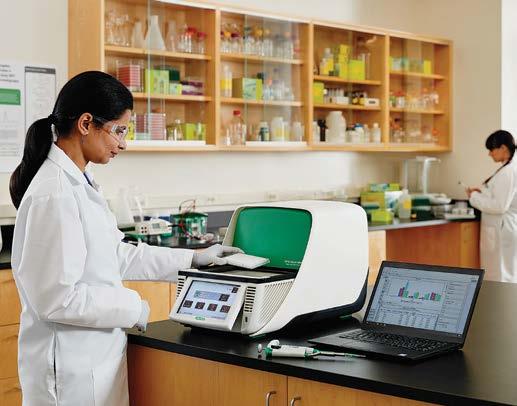
the heritage of the Pasteur Institute. Bio-Rad manufactures tests for food safety with a complete line of solutions for food pathogen testing. We offer a full menu of iQ-Check real-time PCR test kits for the detection of key pathogens, culture media for nutritive enrichment and RAPID'Chromogenic media with easy colony identification for detection of pathogens and enumeration of quality indicators. As an instrument manufacturer, Bio-Rad also provides instrument options for both low and high-volume users, including our iQ-Check Prep automation system. At Bio-Rad, providing products for food, beverage, industrial water, and veterinary safety diagnostics is a relationship that we’ve built with our customers over 70 years".
tests to detect residues, toxins, microbial, and sanitation risks in a wide range of industries.
Testing for: Product Sterility - (EPIC) UHT, ESL; ATP Detection Systems – Advanced hygiene control; Mycotoxin - Raw materials, grain, feed and milk; Pasteurisation Confirmation – Milk: cow, goat, sheep, soft cheeses; Rapid Antibiotic Residues - Raw milk other food matrices.
Megazyme | Manufacture, develop, supply
Enzymes and Enzymatic Test kits - Wine, beverage, food, cereals and dietary fibre, dairy-infant formula, analytical labs, biofuels, grains, animal feed and nutrition research, and biotechnology and enzyme manufacturing.
Stable Micro Systems | World Leaders in Texture Analysis
Texture Analysis - Food profiling and package testing. Powder flow analysis, materials testing, temperature and humidity control
The Volscan Profiler - benchtop laser-based scanner, measures volume, density and dimensional profiles of solid products.
Allergens | Comprehensive suite of rapid food allergen testing solutions, fitting into any industry allergen control plan.
Surface and Food - Wide reliable range of qualitative and quantitative tests by rapid methods and ELISA for food and environments.
We closely support our clients, delivering solutions, ongoing relevant training, provision of rapid essential tech support. Aligned with loan instruments, seminars, and instrument demonstrations.
Contact: Jo Kelly-Tuckey, General Manager for all inquiries. Tell us how we can facilitate making the most out of your quality control!

Hill Labs is New Zealand's largest privately owned analytical laboratory and this year we proudly celebrate 40 years in business. We use the latest technologies to supply a broad range of laboratory tests to domestic and international markets in three testing areas: Food, Environmental and Agriculture.
Hill Labs has earned its reputation through a steadfast commitment to quality and innovation and we are excited to introduce our latest advancement in PCR testing. With the convenience of a single swab, our clients can now request tests for the detection of Enterobacteriaceae, Salmonella, and Cronobacter. This innovation significantly reduces the time and effort required for environmental monitoring and minimises the use of single-use plastics in testing. The 3-in-1 test is designed to streamline environmental monitoring programmes.
Come and talk to us about our new 3-in-1 test at our stand, #2.

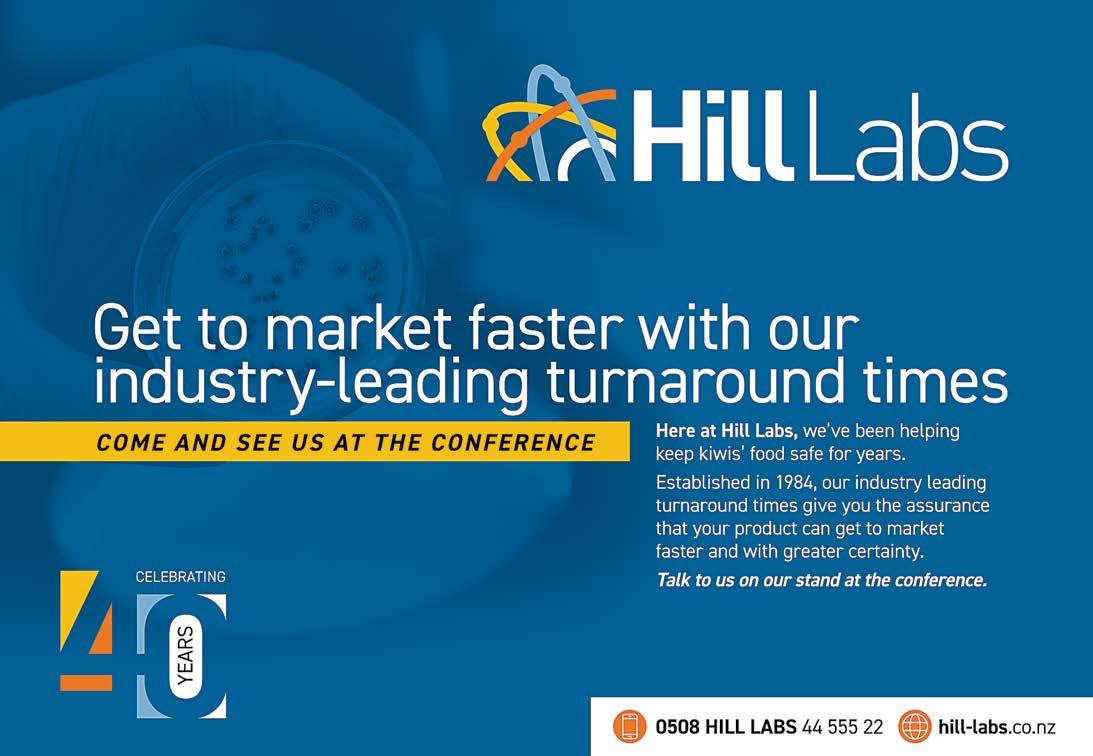

Offering multiple solutions for the New Zealand food and dairy industry.
Gold Standard Diagnostics: Diagnostic test kits and instruments for Food, Feed, and Environmental Safety, offering a broad range of products for diverse applications in research and industry.
RAD Source: Patented Quastar® Photonic Decontamination technology provides the cannabis industry with the only technology to safely inactivate Mould, Powdery Mildew, Aspergillus, BTGN, Yeast, Salmonella, E. coli, Coliform and other challenging microbes.
JASCO: FTIR Application in Food Analysis; for component analysis of dairy product and identification test of food additives
Hamilton Robotics: foodInspect™ NIMBUS® for 3M™ Molecular Detection System. Automation solution for quality pipetting. A single protocol for all pathogens means you can perform up to 96 tests of multiple types in one run.
compounds; and Endotoxin testing and melamine detection in GLP/ GMP environments.
Ohaus: A wide range of balances, scales, pH meters, and moisture analysers that meet the demands of the foods industry at economical prices.

Molecular Devices: Absorbance microplate readers for beer, wine and food safety analyses, including gluten level testing, yeast metabolism, colour and bitterness (IBU's); L-Malic acid and phenolic
Miele Professional: Under-bench and stand-alone laboratory washers/disinfectors with a large range of accessories for wide and narrow neck glassware. Passive drying or active HEPA filtered drying models.
Priorclave: Wide range of autoclaves for all your sterilisation needs.
Hamilton Company: Sensors for process analytics in the food and beverage industries. Optical DO and pH process sensors offer lower operating costs, tighter process control; seamless calibration, troubleshooting and connectivity; quick recovery from SIP, CIP or autoclaving.
Esco: Ovens and incubators from 32L to 240L as well as a wide range of Laminar Airflow Cabinets in either horizontal or vertical airflow formats providing ULPA filtered clean air.
For more information, please contact Bio-Strategy - Part of DKSH Group
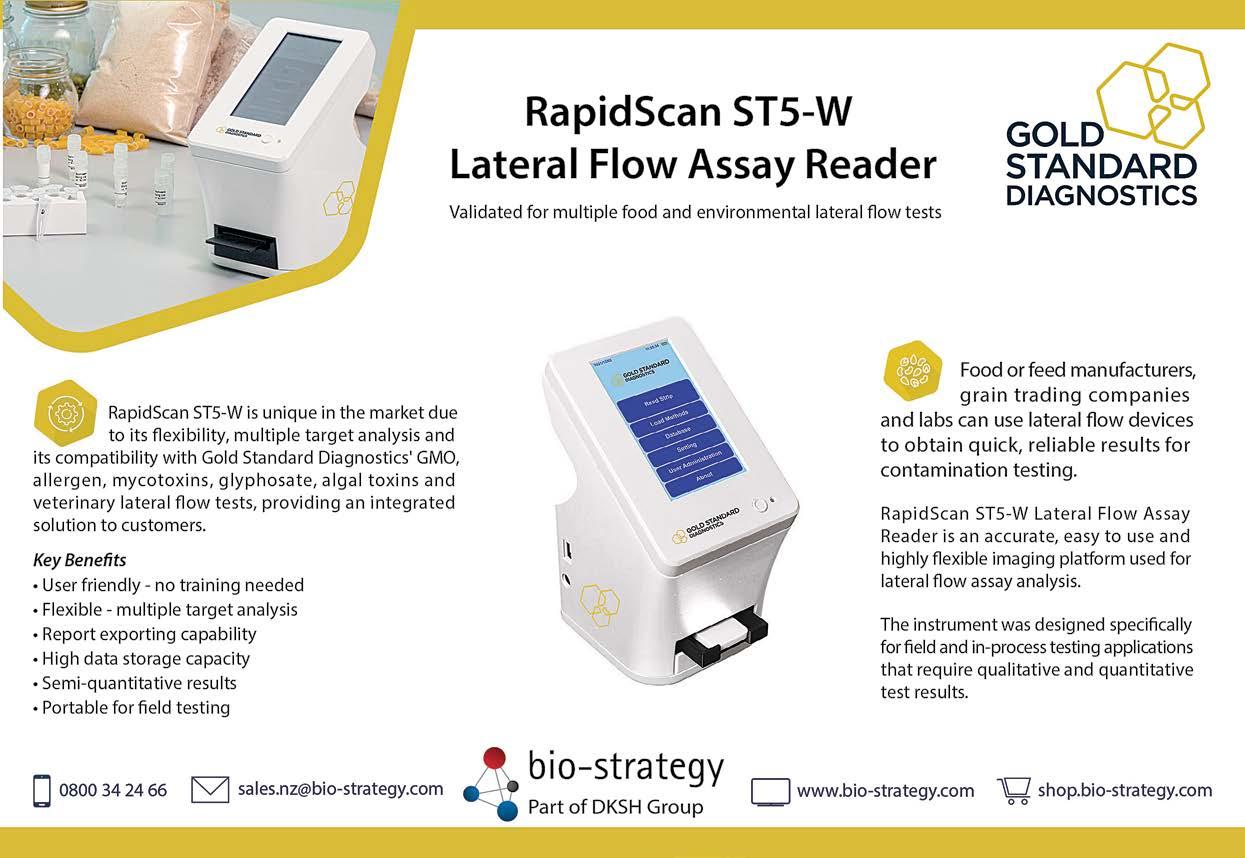

EHEDG (European Hygienic Engineering and Design Group) is the leading industry-good global provider of Hygienic Design information to the food industry. It is a not-for-profit organisation made up of equipment suppliers, food manufacturers, service providers, regulators and academia with the goal of enabling safe food production by providing guidance as an authority on hygienic engineering and design. It provides a valuable resource of information on all aspects of hygienic design requirements and hygienic design management through an ongoing series of ‘Guidelines’ which are regularly updated to keep abreast of developing technologies and food safety issues.
The New Zealand Regional Section of EHEDG and NZIFST have a collaborative agreement to provide mutual membership recognition and support to their members. The New Zealand section has the target of delivering two 4-day EHEDG Certified Advanced Training Courses each year, and attendance has been strong. The value of these courses is high, giving attendees the skill base and knowledge to take leadership roles in Hygienic Design Risk Management in their companies and at the same time improving process efficiencies and quality improvement. The importance of acquiring these skills has been highlighted with GFSI having benchmarked Hygienic Design Standards for both Food Manufacturers and Equipment Suppliers. Come visit us to learn more about our courses and the benefits of EHEDG membership to you and your company. Test your HD knowledge with our interactive display. For more information on EHEDG visit www.ehedg.org.

A New Zealand, family-owned company with offices and warehouses in Dunedin and Auckland, Lab Supply has access to 75+ worldleading scientific brands. The key brands we represent include Merck Sigma, Memmert, Greiner Bio-One and Brand amongst many more. We specialise in supporting food and beverage companies and are committed to equipping you with the right solutions to help you grow your production capacity and lead the way in food safety and quality. Our large product portfolio includes a range of products for media and sample preparation, rapid chemical testing, bioburden and pathogen testing, analytical technologies, product testing and more. We understand the importance of accuracy and rigour in scientific work. With a focus on ensuring that the highest food safety and quality control standards are met, we make sure the products we supply provide accurate, reliable, and consistent results.
Our staff are on hand to help you find the right product, offer technical advice, and make recommendations on the use of equipment you purchase from us. We also support what we sell with in-house servicing, calibration, and repair capabilities for a wide range of laboratory equipment.
Talk to our team today about how we can support your business. Come visit us on stand 14.


FOSS is thrilled to showcase its innovative technologies at the upcoming NZIFST conference. At FOSS, we understand the critical importance of accurate and efficient analysis in ensuring product quality, safety, and nutritional value. Our SmartAnalytics™ solutions empower food scientists and manufacturers to monitor key nutritional parameters with unparalleled precision and speed. Whether you're analysing raw materials, optimising production processes, or conducting in-depth research, FOSS has the tools you need to stay ahead in the competitive food market.
Visit our booth at the NZIFST conference to learn more about our solutions for reference testing such as Kjeldahl, Soxhlet, and fibre analysis, our indirect solutions such as NIR and FTIR using our DS3™ and FT3™ – and many more!
Let's collaborate to unlock new possibilities and elevate the standards of food quality and safety together with FOSS Solutions.

With the recent acquisition of Brabender, Anton Paar’s portfolio has grown and we can now provide solutions for incoming goods, quality control and research throughout the food industry:
• Water content determination
• Optimum water absorption
• Liquid and solid density as well as viscosity measurements
• Concentration determination via density or refractive index
• Mouthfeel determined by rheology
• Particle size analysis
• Kneading behaviour and dough properties
• Starch gelatinisation determination
• Determination of filling volume via tapped density
• Sample preparation via micro-wave assisted or hot-block digestion for elemental analysis
• Inline flow and Brix measurements
• Estimation of shelf life via oxidation stability
• Scaling up from lab to pilot plant food extrusion: produce products of various dimensions, shapes, and compositions, modify and texture various materials such as proteins, starches, fish feed, cereals, and pasta
The product portfolio ranges from portable measuring instruments over high-precision automated laboratory or process measurement technology to individual industry-specific solutions.
You now have all the tools to support your process from raw material QC, formulation, and transportation, to packaging,

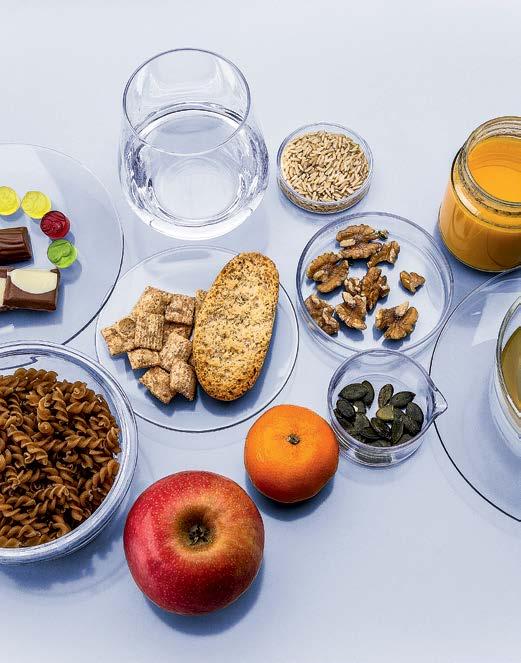
storage, and final product quality control.
Anton Paar provides local service, including a response to all support requests within 24 hours and onsite service with national coverage will of course extend to all Brabender instruments from now on.
Are you a user of competitive equipment, but would like to join the community of happy Anton Paar users? Come and talk to us about trade-in solutions!


At Hygiena®, our mission is to create innovative diagnostics for a healthier world, providing critical solutions that uphold safety and quality standards across various industries. Our suite of products includes the SureTrend® data analysis platform, ATP cleaning verification, allergen detection, molecular diagnostics and product quality tools. These solutions are designed to help you see the bigger picture and make timely decisions to protect your customers and your brand.
We significantly enhance hygiene, quality, and safety within various industries such as food and beverage processing and manufacturing, healthcare and hospitality. Our commitment to innovation and excellence is reflected in our best-in-class One Health Diagnostics™ solutions that span the entire food value chain, from farm to table.
Hygiena is dedicated to the belief that human health is closely connected to the health of animals in our shared environment. Our molecular rapid tests and analysis tools for food and beverage safety, veterinary diagnostics, and environmental monitoring help prevent illness, save lives and contribute to a safer world.
As a global leader in rapid diagnostic tests, we ensure our solutions are reliable, easy to use, and accurate, backed by industry-leading customer service and support. Headquartered in Camarillo, California,

Founded in 1952, the John Morris Group expansion has been guided by a policy which excludes all equipment except those of the highest quality. Our commitment to quality extends to our recruitment process and team, our state-ofart facilities and the service we provide to our customers.
Today we are recognised as one of Australia’s and New Zealand’s leading distributors of a range of specialised scientific and engineering equipment sourced from the world’s leading manufacturers.
Why John Morris?
Quality products from respected brands

Hygiena maintains a significant global presence with numerous offices and customer application centres across the Americas, Europe, Africa, Asia and Australia. Additionally, we partner with over 180 distributors in more than 100 countries worldwide, ensuring our innovative tools reach and benefit a global audience.

Family owned and operated, providing a stable, reliable platform for our customers, suppliers and team
State-of-the-art facilities and operating systems
We exclusively sell and support a portfolio of industry leading scientific and engineering equipment, consumables and instruments
Oceania wide office network
Local sales and service personnel in every capital city of Australia and New Zealand. 10 locations and over 100 employees
Preventative maintenance and breakdown repair
Factory trained service engineers offering rapid onsite or in-house repairs anywhere in Australia, New Zealand and Pacific Islands
Over 70 years privately owned and family operated
Advanced ERP, CRM (Salesforce), Web and in-house facilities to support our partners & customers
ISO9001 Certified and electrical compliance
Every instrument sold is electrically tested and checked prior to delivery. ISO9001 certified for over 30 years
Factory trained team
Product managers and service engineers regularly attend and receive factory training
Leading customer service and support
All enquiries and calls are monitored for quality purposes. Targeted response time under two hours.

Over the past two decades, MicroAnalytix has been successfully finding cost effective and advanced technology solutions to help you with ever-changing scientific needs of your analytical labs, thereby contributing to improving food safety and quality. From microbiological testing to chemical analysis, we provide the essential tools and equipment necessary for food manufacturers to meet regulatory requirements while at the same time enhancing product quality.
MicroAnalytix has partnered with industry-leading suppliers around the world to bring their cutting-edge innovative products to our labs in New Zealand and try to stay ahead of the curve. We also offer tailored solutions to address emerging challenges and support the development of new products and processes within Biotechnology, Dairy, Food and Beverage industries.
We specialise in wide range of product categories, including, but not limited to, filtration equipment and consumables, media


Bringing global expertise to regional New Zealand.
We think it’s important to be close to our customers, which is why you’ll find Eurofins Food and Water Testing NZ at eight locations from Auckland to Invercargill. And we’re still growing – adding new capacity and logistics to make sure our world-class food and water laboratory testing is accessible to all who need it.
While our roots are local, our expertise is global. As part of a unique international network of over 900 laboratories in 62 countries, we tap into specialist centres of excellence for the latest testing technologies, processes, and innovation. We draw on a portfolio of over 200,000 analytical methods, and offer customers across the dairy, meat, seafood, food processing and petfood sectors, an unmatched scope of food and water analytical testing, supported by world-leading scientific expertise.
When you partner with Eurofins Food and Water Testing NZ you bring this global capability to your doorstep - wherever you are in New Zealand.
Really Local. Truly Global
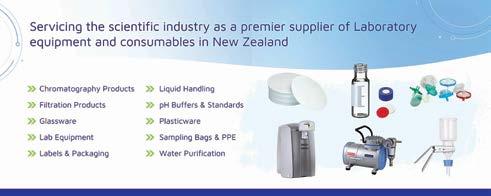
and sample preparation, identification labels, water purification, environmental and analytical testing.
Specific to the Food and Beverage Industry, we offer products to cater to your needs in
Food Safety Testing | Quality Assurance and Control | Nutritional Analysis | Allergen Testing | Food Authenticity and Traceability | Shelf-Life Studies | Research and Development Support
We partner with you in the journey towards safer, more sustainable, and transparent lab solutions.
To learn more about us and our extensive products come and see us at Booth 5.

New Zealand Food Safety is a business unit of the Ministry for Primary Industries, and proud sponsor of the Significant Contribution to Food Safety Award.
We work within the food safety system to ensure that food, which is grown, produced, prepared, shared, and consumed across Aotearoa is safe and suitable for everyone. Each day, more than 5 million New Zealanders and around 40 million consumers around the world interact with our food system – from farm to fork.
Under the Animal Products, Food, Wine, and Agricultural Compounds and Veterinary Medicines (ACVM) Acts, the food industry is responsible for producing safe and suitable food while demonstrating they meet legal requirements. New Zealand Food Safety set regulatory standards relevant to each part of the food supply system and enforce food safety rules and standards under these acts. We apply the latest scientific expertise through effective risk assessments to all guidance, advice, and regulations.
New Zealand Food Safety are proud to sponsor the Significant Contribution to Food Safety Award, which is awarded at the conference awards dinner. This award recognises an individual, a team, or an organisation who has made a significant improvement to food safety in New Zealand.
Find us on stand 12 at the conference or visit our website for more information, including subscribing to regular food safety newsletters by scanning the QR code.



Your one stop solution.
Embark on a seamless path to success in food science and technology. Mediray, proudly New Zealand owned and operated. Our homegrown roots ensure agility, reliability, and a touch of Kiwi ingenuity in every solution we deliver.
Why Choose Us?
Unrivalled Quality: We meticulously curate a diverse range of top-quality laboratory equipment and consumable from leading manufacturers like bioMérieux, Revvity, Eppendorf, Hanna

Onelab offers a range of products for food manufacturers, from the laboratory through to process optimisation and finished product testing.
New Products for 2024: Milli-Q Lab Water solutions, PEAK generators, Mun gloves, Cytiva Filtration and PS Analytical.
Additional to these new brands, key products in our food testing product range are the international leading brands: R-Biopharm, Mettler Toledo, Buchi, Interscience and INTEGRA.
We specialise in food and feed analysis, offering innovative products and user-friendly solutions for the analysis of allergens, mycotoxins, microbiological contaminants, protein, fat, pH, acidity, nitrate, physical parameters and much, much more.
Onelab believe Results Matter; contact us for your Laboratory requirements.

Thermo Fisher Scientific is the world leader in serving science, enabling customers to make the world healthier, cleaner and safer. Our comprehensive range includes high-end analytical and process instrumentation, laboratory equipment, a complete range of consumables, chemicals and reagents as well as the service and support to optimise your results. We’ve combined sales and service teams to make it easier for customers to connect with all our capabilities and our leading global brands. Our local team of more than 1000 employees work together across Australia and New Zealand to provide unparalleled industry, product and application expertise. From research to academia; diagnostics, medical and healthcare; biotechnology and pharmaceutical; food,
Instruments, Elisa Systems, Macherey-Nagel, ensuring you have access to the best tools for your projects.
Expert Support: Engage with our knowledgeable team, equipped with robust scientific backgrounds, who will expertly guide you in selecting tailored solutions to meet your specific requirements and challenges.
Swift Decision-Making: As a locally owned business, we make decisions promptly and efficiently. Experience unparalleled responsiveness and flexibility tailored to your needs.
Trusted Relationships: Our commitment to integrity, transparency, and excellence has earned us the trust and loyalty of our customers across the nation. Join the ranks of satisfied clients who rely on our expertise and reliability for their success.
Discover More at Our Booth!
Visit booth #6 to explore and engage with our knowledgeable team to find the perfect fit for your needs and take advantage of exclusive offers and insights.
Transform your food science journey with Mediray. Let us collaborate to achieve your goals and drive innovation in the world of food science and technology!

diary and beverage; manufacturing and utilities; heavy industry, minerals, mining and petrochemical; environmental gas, water and assessment technologies.
Thermo Scientific products and services can help your lab run seamlessly, while enabling you to expand your menu of food analyses with innovative instruments and connected data to transform your output. Meet evolving food safety testing challenges and regulatory demands while delivering results with the speed and accuracy your stakeholders expect, saving money and minimising the risk of recalls.
From pesticide residue analysis to detecting mycotoxins and other biotoxins, we have your analytical needs covered. Additionally, our complete end-to-end food analysis workflow solutions are designed to meet food testing regulatory guidelines and deliver robust, off-the-shelf solutions for fast implementation and optimum performance for contract testing and other routine testing labs, to let you focus on ensuring the delivery of safe, highquality food products.

The Riddet Institute
3 Minute Pitch Competition Sponsors
The Riddet Institute is a New Zealand Centre of Research Excellence (CoRE) with a focus on food science and nutrition. Established in 2003 as a Massey University research centre, it was awarded CoRE status in 2007 and has held that status ever since. The Riddet Institute brings together more than 160 world-class scientists and postgraduate students across 10 universities and research organisations, with expertise at the intersection of food material science, food engineering, gastrointestinal biology, and human nutrition to work on collaborative research programmes. Research has led to several important advancements that can be applied in novel foods or food ingredients. These patented discoveries are often commercialised through local or international food companies, such as FerriPro™, which has been acquired by Nestlé to combat global iron deficiency.
The Institute has developed a worldwide reputation for its work in food structure and digestion, protein functionality and metabolism (including developing the Digestible Indispensable Amino Acid Score (DIAAS)), and human digestion modelling. Its research into alternative foods, novel food production and sustainable nutrition aims to solve the food availability and nutrition problems of the future. Consumer and sensory research is another important aspect of the Institute’s work, evaluating consumer responses to foods including future proteins and plant-based alternatives. The Riddet Institute also plays a vital role in influencing nutritional guidelines and government policy based on its expertise in food and nutrition, with the Institute’s scientists active in domestic and international nutrition panels and advocacy groups.

Our services and products are designed to help with every stage of an innovator's journey to commercialising their idea. We provide funding and scientific expertise, promote R&D, facilitate collaboration between researchers, scientists, and industry and support the commercialisation of ideas.
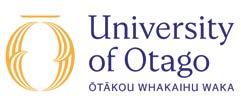



Student Poster Competition Sponsors
The food industry is undergoing a period of unprecedented change. In response, the University of Otago proudly offers a comprehensive ‘farm-to-fork and beyond’ degree. The BSc in Food Science has been re-designed to produce well-equipped graduates to address the challenges of improving food systems' social, environmental, and economic sustainability.
We have, therefore, moved away from our two traditional prescribed programmes (Food Science and Consumer Food Science) to a new merged, single, more flexible degree that enables students to tailor their programme based on their career aspirations. This degree will accommodate a broader range of career pathways, including Product Development, Safety and Quality, Production and Processing, Ingredient Technology and Consultancy, Marketing and Consumer Insights, Policy and Regulatory, Sensory Science, Sustainability, and Entrepreneurship. Our YouTube channel has many short videos of people discussing their varied careers in the New Zealand food industry. Check out the Food Science Otago YouTube channel
The Department is recognised as a leader in discovering and delivering the science required to catalyse change for a sustainable food future.


Daily Refreshment Breaks Sponsor
“Connell Caldic is a part of Caldic, a global provider of valueadded distribution solutions for the life and material sciences in 42 countries across Europe, Latin America, North America, and AsiaPacific. We offer a broad spectrum of food and nutrition solutions for the New Zealand market, including natural colours and flavours, effective antimicrobials, advanced emulsifiers, and industry-leading mould inhibitors, tailored to enhance taste and functionality. We also provide innovative health ingredients like Sunfiber® for digestive health, and BC30 probiotics and Wellmune® for immune support. Additionally, our range includes aerating agents, egg replacers, natural antioxidants, sweeteners, enzymes and customised solutions (e.g. vitamin and minerals premixes). With a focus on clean label and sustainability, evidenced by our Platinum EcoVadis Medal, Connell Caldic supports food technologists and product developers in creating cutting-edge products that resonate with health-conscious consumers. Partner with us for top-quality ingredients and expert support.


Session Sponsor
PharmaNZ, a family-owned New Zealand company, manufactures vitamin premixes, dietary supplements, nutraceuticals, and complementary medicines.
Specialising in pre-blends, powders, capsules, and tablets, their technical team uses proprietary technologies to create awardwinning products with unique ingredients. Certifications include GMP, Organic, and Halal, with international registrations like TGA, USFDA, and China GACC.
PharmaNZ aids the wellness industry by supporting start-ups and established brands with product development, sourcing, manufacturing and 3PL services. As a one-stop shop for product fulfilment, PharmaNZ drives brand growth and innovation.
